Search Result
Results for "
preferential
" in MedChemExpress (MCE) Product Catalog:
5
Biochemical Assay Reagents
2
Isotope-Labeled Compounds
| Cat. No. |
Product Name |
Target |
Research Areas |
Chemical Structure |
-
- HY-16271
-
|
4-Isothioureidobutyronitrile hydrochloride; thioureidobutyronitrile hydrochloride; thioureido butyronitrile hydrochloride
|
MDM-2/p53
Apoptosis
|
Cancer
|
|
Kevetrin hydrochloride is a potent activator of p53, induces apoptosis in TP53 wild-type and mutant acute myeloid leukemia cells. Kevetrin a preferential cytotoxic activity against blast cells .
|
-

-
- HY-118250
-
|
|
Toll-like Receptor (TLR)
IFNAR
TNF Receptor
|
Inflammation/Immunology
|
|
GSK2245035 is a highly potent and selective intranasal Toll-Like receptor 7 (TLR7) agonist with preferential Type-1 interferon (IFN)-stimulating properties. GSK2245035 has pEC50s of 9.3 and 6.5 for IFNα and TFNα. GSK2245035 effectively suppresses allergen-induced Th2 cytokine production in human peripheral blood cell cultures. GSK2245035 is used for asthma .
|
-
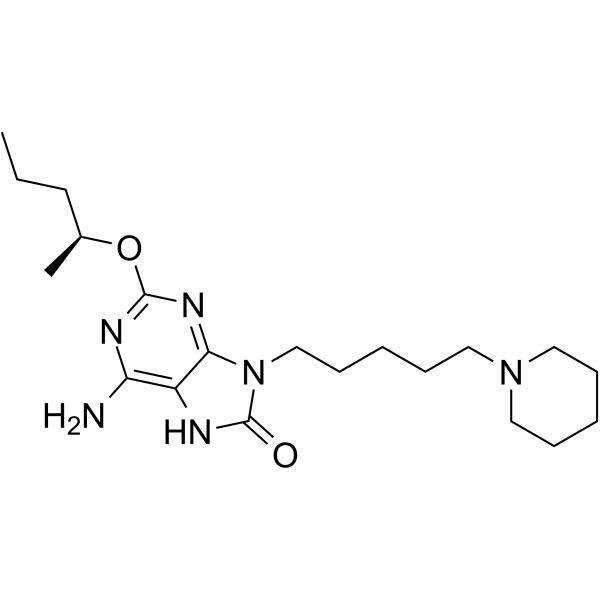
-
- HY-119468
-
-
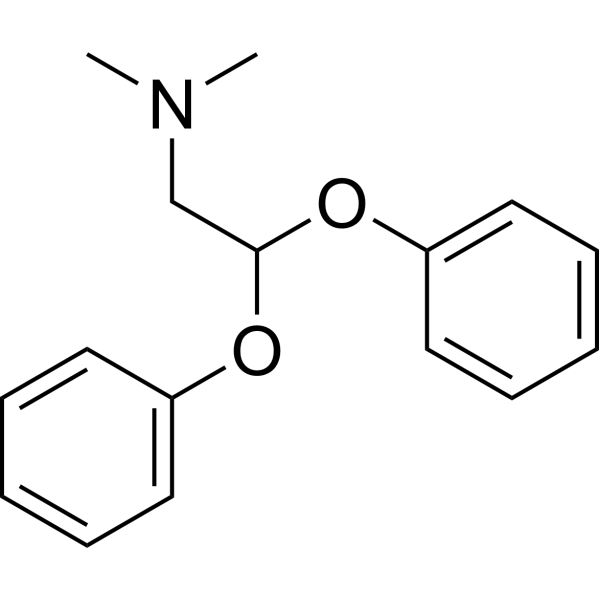
-
- HY-156857
-
-
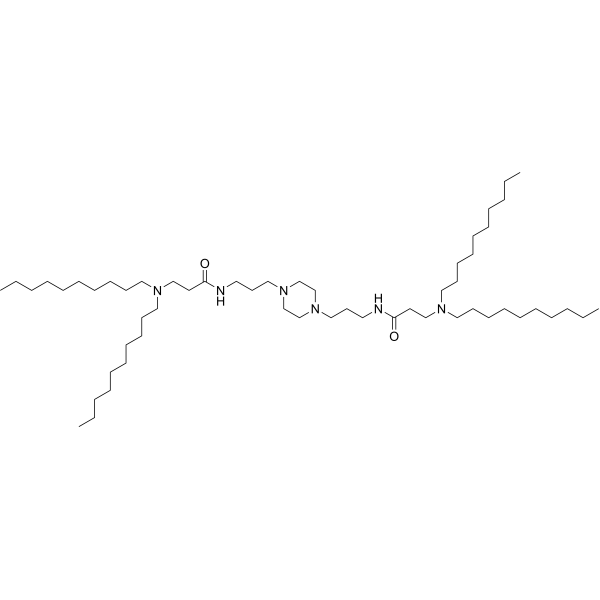
-
- HY-U00030
-
|
|
mAChR
|
Neurological Disease
|
|
Rispenzepine is a novel antimuscarinic compound with a preferential action at M1, and M3 receptor subtypes.
|
-

-
- HY-13640
-
|
GS-9219; VDC-1101
|
Nucleoside Antimetabolite/Analog
|
Cancer
|
|
Rabacfosadine (GS-9219), a novel proagent of the nucleotide analogue PMEG, is designed as a cytotoxic agent that preferentially targets lymphoid cells.
|
-
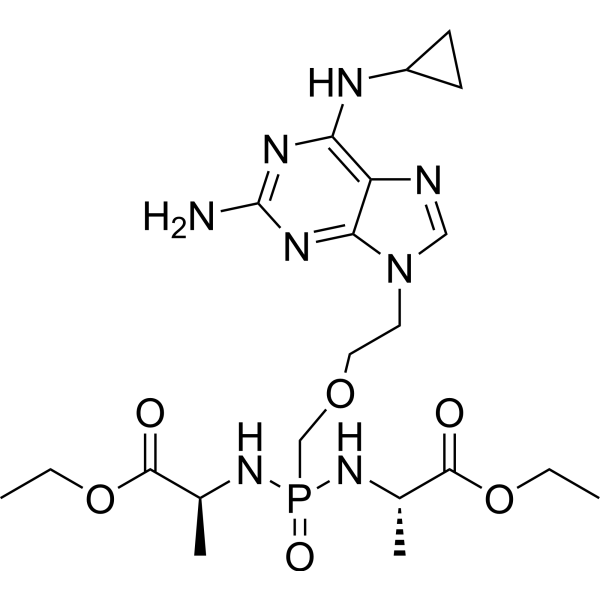
-
- HY-13640A
-
|
GS-9219 succinate; VDC-1101 succinate
|
Others
|
Cancer
|
|
Rabacfosadine (GS-9219) succinate, a novel proagent of the nucleotide analogue PMEG, is designed as a cytotoxic agent that preferentially targets lymphoid cells .
|
-
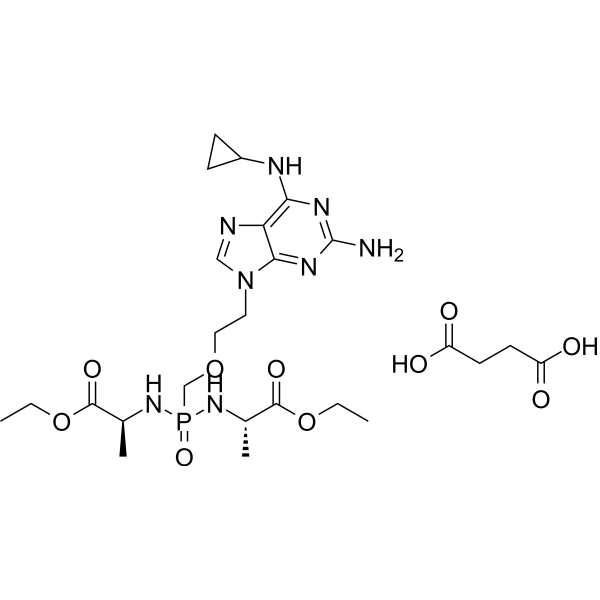
-
- HY-13067
-
-

-
- HY-107713
-
|
|
iGluR
|
Neurological Disease
|
|
PPDA is a subtype-selective NMDA receptor antagonist that preferentially binds to NR2C/NR2D containing receptors .
|
-

-
- HY-P2355A
-
-
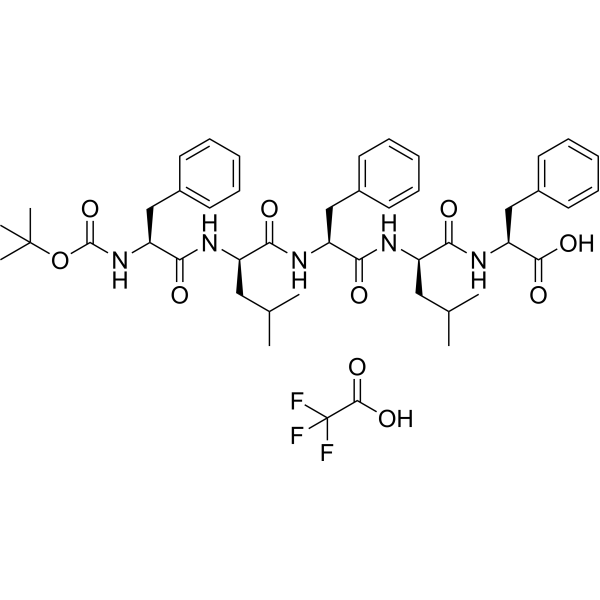
-
- HY-E70199
-
|
APN/CD13
|
Others
|
Others
|
|
A Aminopeptidase N (rat) (APN/CD13) is a Zn 2+ dependent membrane-bound ectopeptidase that degrades preferentially proteins and peptides with a N-terminal neutral amino acid .
|
-

-
- HY-P2355
-
-
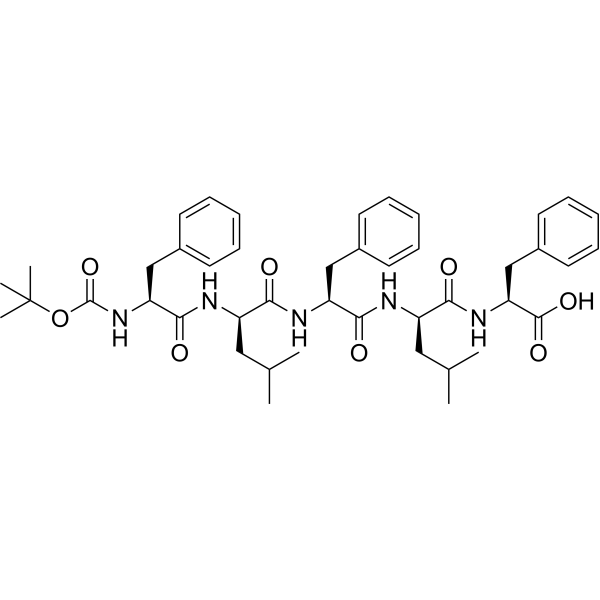
-
- HY-Y1422
-
|
Alkaline lipase
|
Others
|
Metabolic Disease
|
|
Triacylglycerol lipase is an enzyme that preferentially hydrolyzes the outer links of triacylglycerols and acts only on the water-lipid interface. Pancreatic triacylglycerol lipase is the single most important determinant of lipid absorption .
|
-

-
- HY-106908
-
|
WAY-PDA 641
|
Phosphodiesterase (PDE)
|
Inflammation/Immunology
|
|
WAY-PDA 641 is a potent and preferential PDE-IV inhibitor, with an IC50 of 0.42 μM for canine trachealis PDE-IV. WAY-PDA 641 induces respiratory muscle relaxation and bronchodilation .
|
-
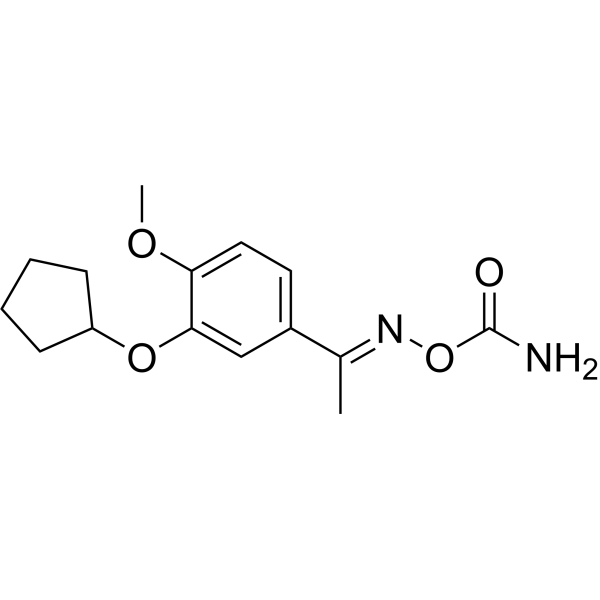
-
- HY-137843
-
|
|
DNA/RNA Synthesis
|
Cancer
|
|
NSC 80467, a DNA damaging agent, selectively inhibits survivin. NSC 80467 preferentially inhibits DNA synthesis and results in induction of γH2AX and pKAP1, two markers of DNA damage .
|
-

-
- HY-P10036
-
|
|
PKG
|
Others
|
|
G-Subtide is a G-substrate peptide localized in Purkinje cells of the cerebellum. G-Subtide has little activity distinct from background and is a preferentially phosphorylated peptide substrate of recombinant PfPKG2 protein .
|
-
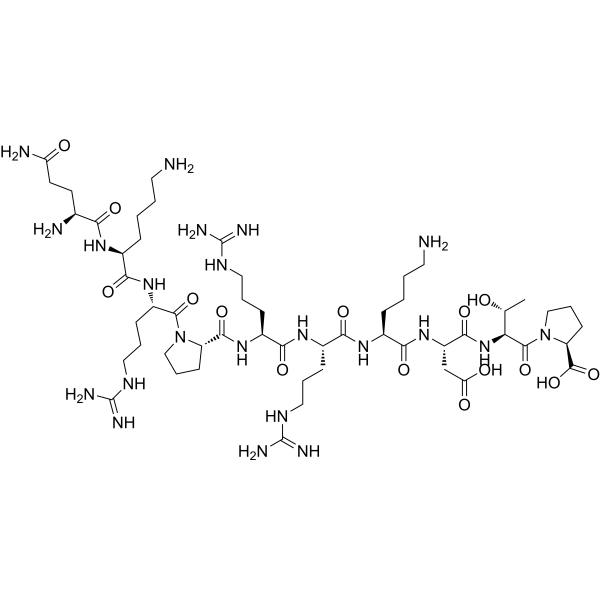
-
- HY-153737
-
|
|
Liposome
|
Others
|
|
113-N16B is an ionizable cationic lipid used for the generation of lipid nanoparticles (LNPs). 113-N16B delivers mRNA preferentially to pulmonary endothelial cells.
|
-
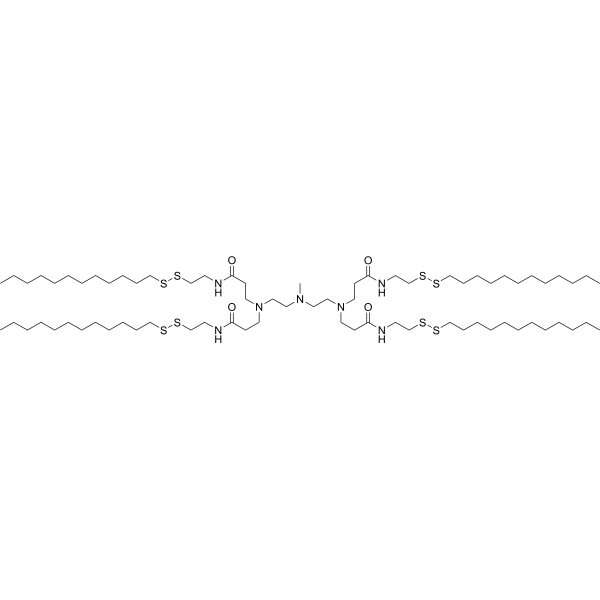
-
- HY-W394903
-
|
|
JAK
Drug Metabolite
|
Cancer
|
|
GS-829845 is a major, active metabolite of Filgotinib (HY-18300). GS-829845 is a JAK1 preferential inhibitor but is approximately 10-fold less potent than the parent and with a longer half-life .
|
-

-
- HY-N6744
-
|
|
Apoptosis
|
Infection
Cancer
|
|
Chaetoglobosin A, the active principle within the extract of Penicillium aquamarinium, is a member of the cytochalasan family. Chaetoglobosin A preferentially induces apoptosis. Chaetoglobosin A targets filamentous actin in CLL cells and thereby induces cell-cycle arrest and inhibits membrane ruffling and cell migration .
|
-
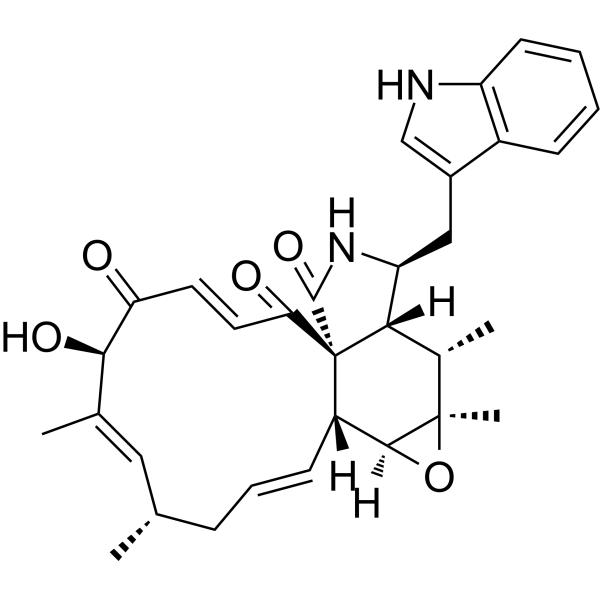
-
- HY-P3035
-
|
|
G Protein-coupled Receptor Kinase (GRK)
|
Neurological Disease
|
|
Corazonin is a highly conserved neuropeptide hormone of wide-spread occurrence in insects, serves a central regulator of caste identity and behavior in social insects. Corazonin is also preferentially expressed in workers and/or foragers from other social insect species .
|
-

-
- HY-112058
-
|
NSC-82150
|
Antibiotic
Apoptosis
|
Infection
|
|
Distamycin A (NSC-82150), an oligopeptide antibiotic, is a minor groove binder which binds to B-form DNA, preferentially at A/T rich sites.Distamycin A can change Enediyne-induced DNA cleavage sites and enhances apoptosis .
|
-
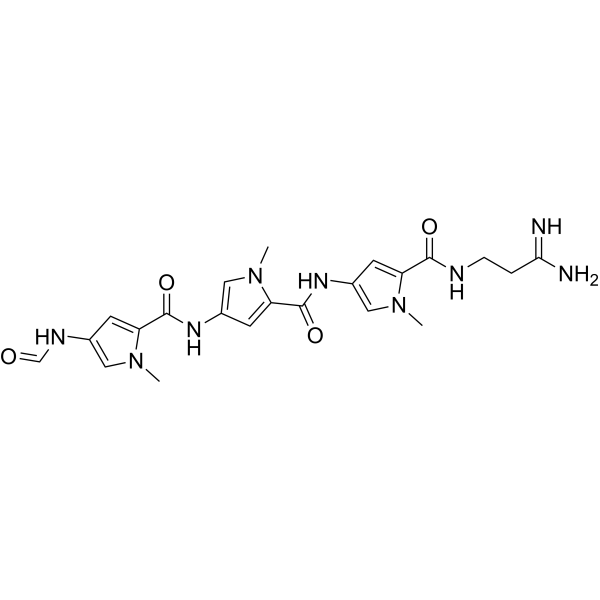
-
- HY-N2003
-
|
|
|
|
|
D-Tetrahydropalmatine is an isoquinoline alkaloid, mainly in the genus Corydalis . D-Tetrahydropalmatine is a dopamine (DA) receptor antagonist with preferential affinity toward the D1 receptors . D-Tetrahydropalmatine is a potent organic cation transporter 1 (OCT1) inhibitor .
|
-

-
- HY-141837
-
|
|
Parasite
|
Infection
|
|
MMV674850 is potent against asexual stage parasites at 2.7 and 4.5 nM and preferentially targets early-stage gametocytes (early-stage gametocyte: IC50 4.5 ± 3.6 nM; late-stage gametocyte: IC50 28.7 ± 0.2 nM).
|
-
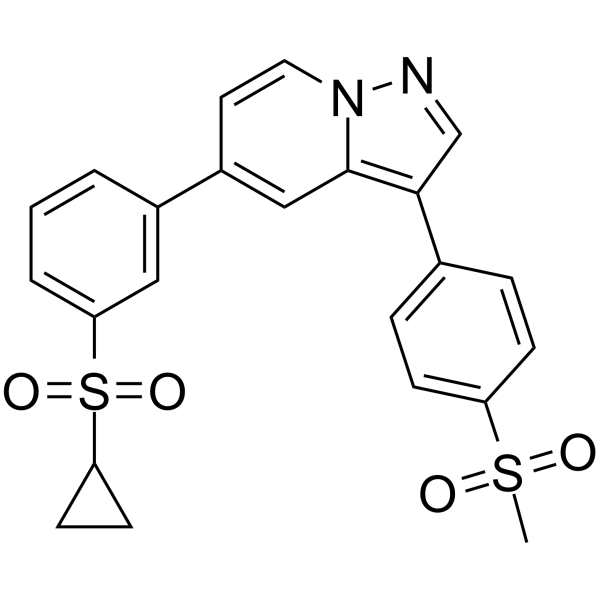
-
- HY-115766
-
|
|
nAChR
|
Neurological Disease
|
|
Anabaseine is a non-selective nicotinic agonist. Anabaseine stimulates all AChRs, preferentially stimulates skeletal muscle and brain α7 subtypes . Anabaseine is also a weak partial agonist at α4β2 nAChRs .
|
-
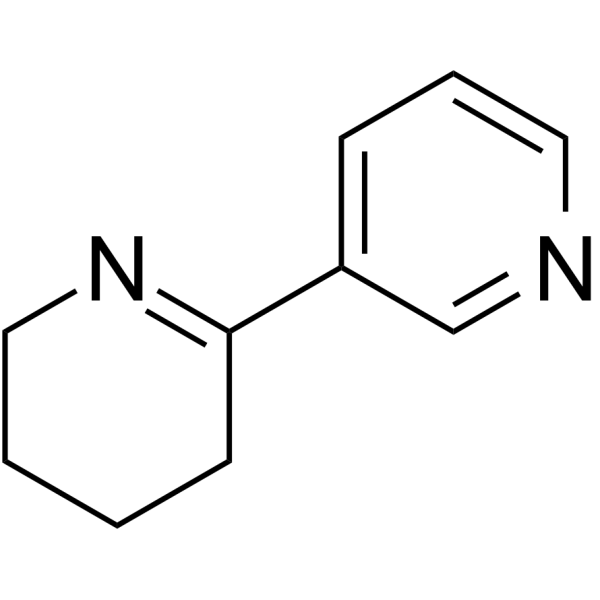
-
- HY-147774
-
|
|
Others
|
Inflammation/Immunology
|
|
NAAA-IN-2 (Compound 9) is a potent and selective inhibitor of NAAA with an IC50 of 50 nM. NAAA is a cysteine amidase which preferentially hydrolyzes the endogenous biolipids palmitoylethanolamide (PEA) and oleoylethanolamide (OEA). NAAA-IN-2 has the potential for the research of inflammation and pain .
|
-
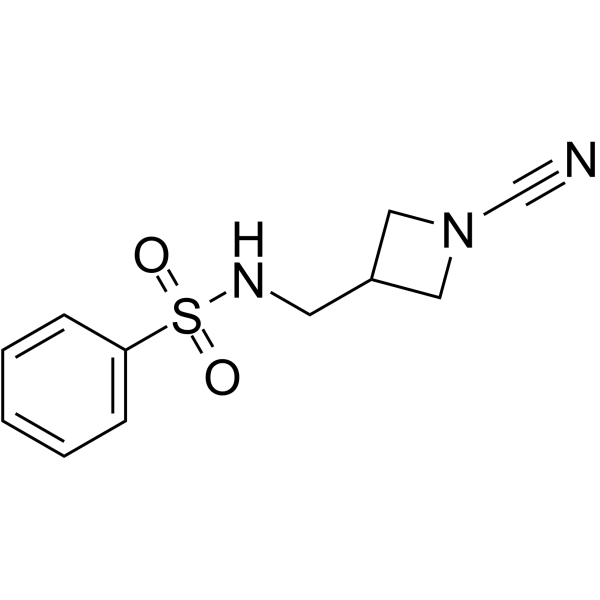
-
- HY-147773
-
|
|
Others
|
Inflammation/Immunology
|
|
NAAA-IN-1 (Compound 1) is a potent and selective inhibitor of NAAA with an IC50 of 7 nM. NAAA is a cysteine amidase which preferentially hydrolyzes the endogenous biolipids palmitoylethanolamide (PEA) and oleoylethanolamide (OEA). NAAA-IN-1 has the potential for the research of inflammation and pain .
|
-

-
- HY-147775
-
|
|
Others
|
Inflammation/Immunology
|
|
NAAA-IN-3 (Compound 17a) is a potent and selective inhibitor of NAAA with an IC50 of 50 nM. NAAA is a cysteine amidase which preferentially hydrolyzes the endogenous biolipids palmitoylethanolamide (PEA) and oleoylethanolamide (OEA). NAAA-IN-3 has the potential for the research of inflammation and pain .
|
-
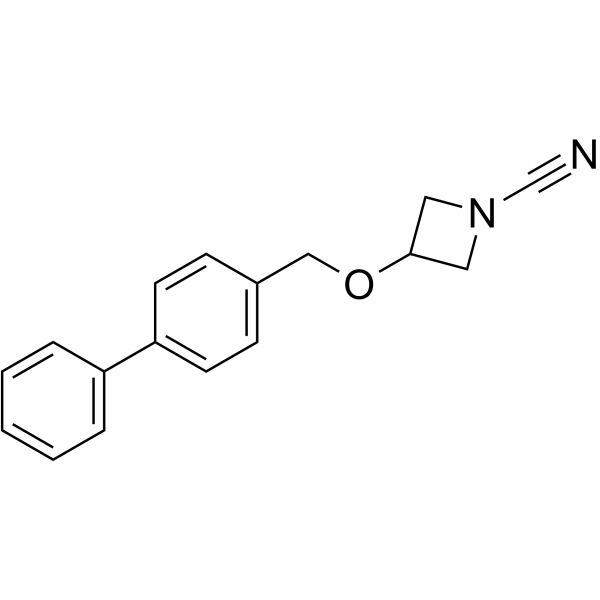
-
- HY-123956
-
|
|
IRAK
|
Inflammation/Immunology
|
|
HG-12-6 is a type II inhibitor of IRAK4. HG-12-6 shows preferential binding to unphosphorylated inactive IRAK4 with an IC50 of 165 nM. HG-12-6 can modulate IRAK4 activity in autoimmunity and inflammation .
|
-
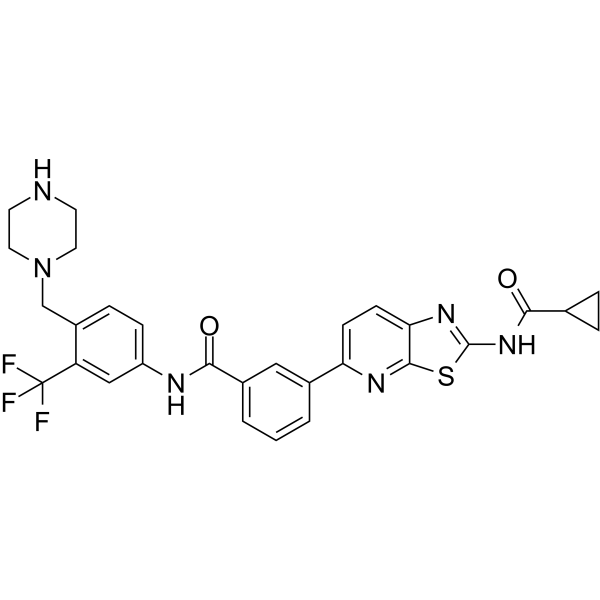
-
- HY-13297
-
|
|
E1/E2/E3 Enzyme
|
Cancer
|
|
PYZD-4409 is a specific inhibitor of the ubiquitin-activating enzyme UBA1 with an IC50 of 20 μM (cell-free enzymatic assay). PYZD-4409 induces cell death in malignant cells and preferentially inhibits the clonogenic growth of primary acute myeloid leukemia cells .
|
-
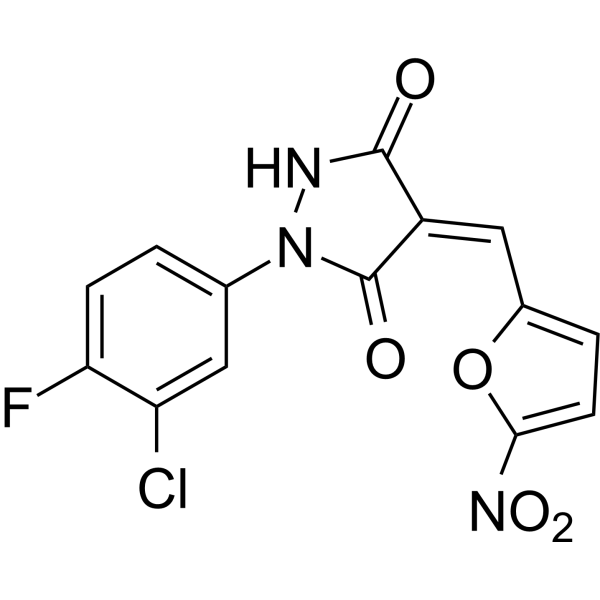
-
- HY-12650
-
|
DS5565
|
Calcium Channel
|
Neurological Disease
|
|
Mirogabalin (DS-5565) is a novel, preferentially selective α2δ-1 ligand characterized by high potency and selectivity to the α2δ-1 subunit of voltage-sensitive calcium channel complexes in the CNS.
|
-

-
- HY-N7119
-
|
|
Others
|
Inflammation/Immunology
|
|
Cimicifugoside, a triterpenoid isolated from Cimicifuga simplex, is a novel specific nucleoside transport inhibitor that displays synergistic potentiation of methotrexate cytotoxicity . Cimicifugoside shows immunosuppressive activity, which is preferentially directed toward B-cell function with larger doses being required for suppression of T-cell function .
|
-
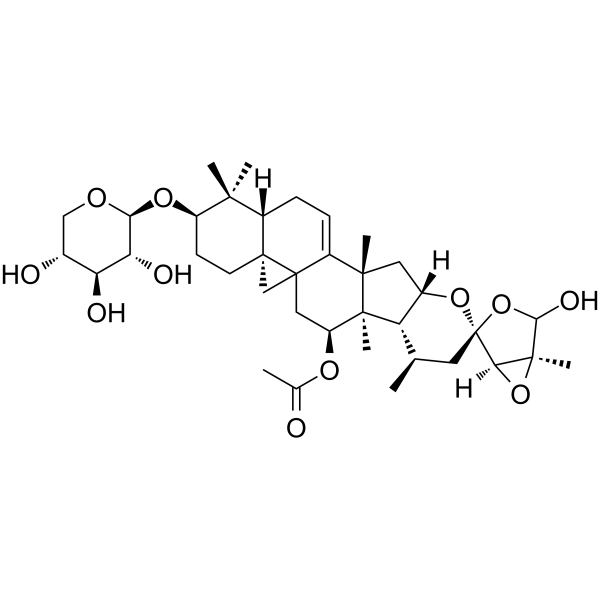
-
- HY-145657
-
|
BQQ
|
Others
|
Others
|
|
Benzoquinoquinoxaline (BQQ) is a heterocyclic compound with an aminoalkyl side chain. Benzoquinoquinoxaline preferentially binds to DNA triplex structures, intercalates between the bases, thus, stabilising the triplex conformation. Conjugation of Benzoquinoquinoxaline to 1,10-phenanthroline specifically binds and cleaves double strand DNA at the site of formation of a triplex structure .
|
-
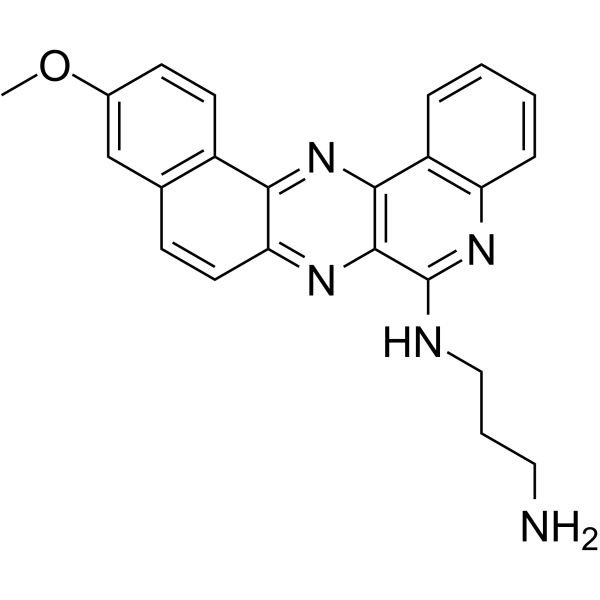
-
- HY-N1919
-
|
Raubasine
|
|
|
|
Ajmalicine (Raubasine) is a potent adrenolytic agent which preferentially blocks α1-adrenoceptor. Ajmalicine is an reversible but non-competitive nicotine receptor full inhibitor, with an IC50 of 72.3 μM. Ajmalicine also can be used as anti-hypertensive, and serpentine, with sedative activity .
|
-
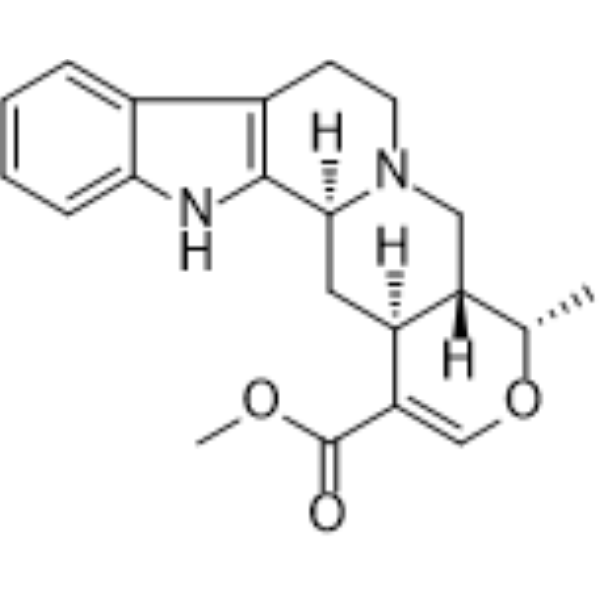
-
- HY-104013
-
|
|
CDK
Apoptosis
|
Cancer
|
|
Aminopurvalanol A is a potent, selective, and cell permeable inhibitor of Cyclins/Cdk complexes. Aminopurvalanol A preferentially targets the G2/M-phase transition inhibiting cancer cell differentiation. Aminopurvalanol A causes the inhibition of sperm fertilizing ability via the inhibition of physiological capacitation-dependent actin polymerization .
|
-

-
- HY-146420
-
|
|
HSP
|
Cardiovascular Disease
Cancer
|
|
GRP78-IN-2 (Compound FL5) is a GRP78 (Glucose Regulated Protein 78 kDa) inhibitor. GRP78-IN-2 preferentially targeting cell surface GRP78 and shows potent antiangiogenic and anticancer activities without affecting other normal cells .
|
-
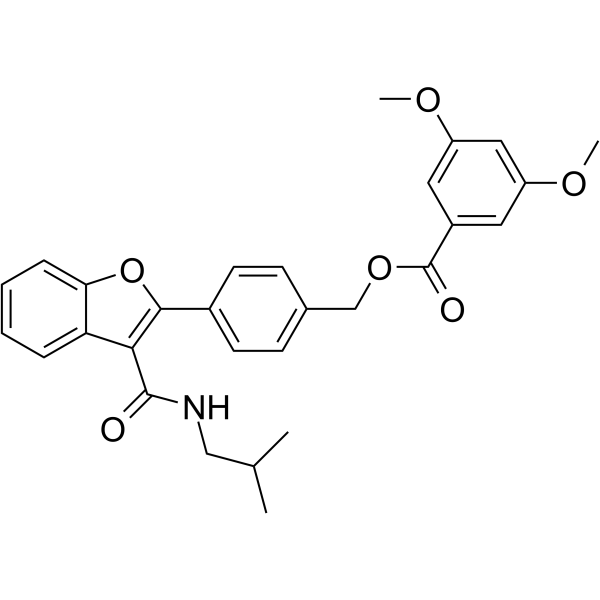
-
- HY-N1919A
-
|
Raubasine hydrochloride
|
Adrenergic Receptor
Cholinesterase (ChE)
|
Neurological Disease
Endocrinology
|
|
Ajmalicine (Raubasine) hydrochloride is a potent adrenolytic agent which preferentially blocks α1-adrenoceptor. Ajmalicine hydrochloride is an reversible but non-competitive nicotine receptor full inhibitor, with an IC50 of 72.3 μM. Ajmalicine hydrochloride also can be used as anti-hypertensive, and serpentine, with sedative activity .
|
-

-
- HY-U00165
-
|
(±)-DG5128; DG5128
|
Adrenergic Receptor
|
Metabolic Disease
Endocrinology
|
|
Midaglizole hydrochloride (DG5128) is a preferential α2-adrenoceptor antagonist. Midaglizole hydrochloride (DG5128) exhibits 7.4 times higher affinity (pKi=6.28) toward α2-adrenoceptor than α1-adrenoceptor.
|
-
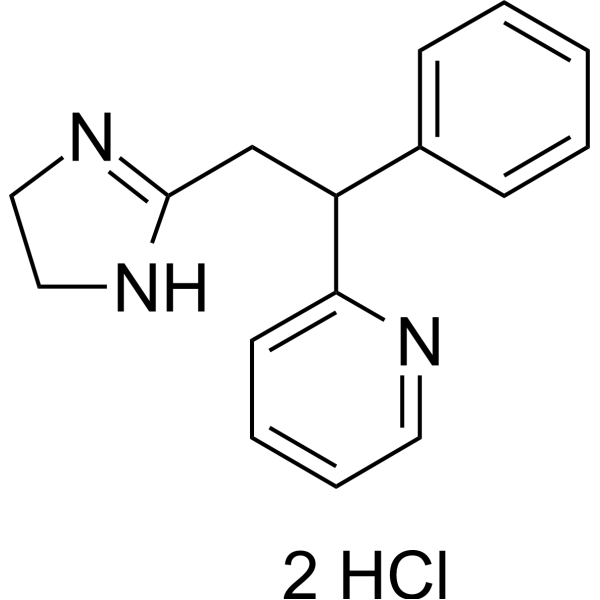
-
- HY-120994
-
|
|
PKA
|
Neurological Disease
Inflammation/Immunology
|
|
Rp-8-CPT-cAMPS sodium, a cAMP analog, is a potent and competitive antagonist of cAMP-induced activation of cAMP-dependent PKA I and II. Rp-8-CPT-cAMPS sodium preferentially selects site A of RI compares to site A of RII and site B of RII compares to site B of RI .
|
-
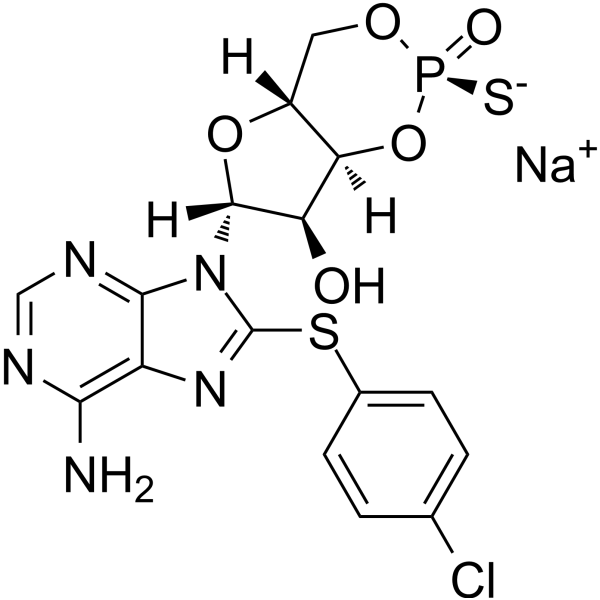
-
- HY-120994A
-
|
|
PKA
|
Neurological Disease
Inflammation/Immunology
|
|
Rp-8-CPT-cAMPS, a cAMP analog, is a potent and competitive antagonist of cAMP-induced activation of cAMP-dependent PKA I and II. Rp-8-CPT-cAMPS preferentially selects site A of RI compares to site A of RII and site B of RII compares to site B of RI .
|
-
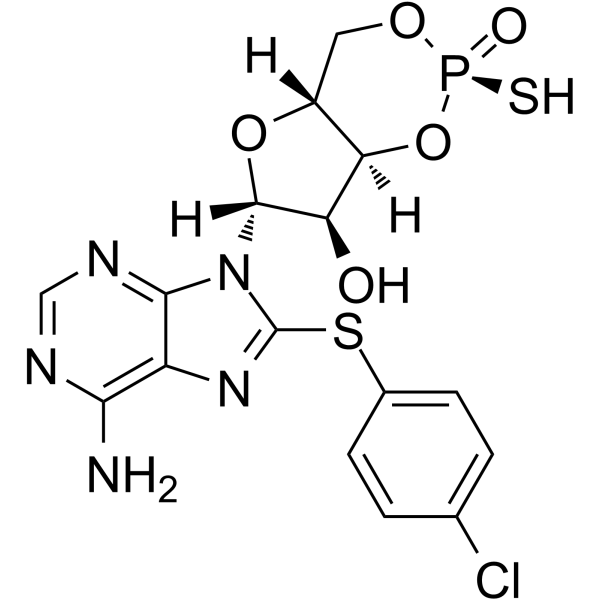
-
- HY-108553
-
|
|
Proteasome
Apoptosis
|
Cancer
|
|
Dihydroeponemycin, an analogue of the antitumor and antiangiogenic natural product eponemycin, selectively targets the 20S proteasome. Dihydroeponemycin covalently modifies a subset of catalytic proteasomal subunits, binding preferentially to the IFN-gamma-inducible subunits LMP2 and LMP7. Dihydroeponemycin-mediated proteasome inhibition induces a spindle-like cellular morphological change and apoptosis .
|
-

-
- HY-113592
-
|
|
ERK
|
Cancer
|
|
ERK-IN-4 is an ERK inhibitor binds preferentially to ERK2 with a Kd of 5 μM. ERK-IN-4 specificity inhibits ERK Rsk-1 and Elk-1 phosphorylation. ERK-IN-4 has little effect on ERK protein phosphorylation by its upstream activator MEK1/2 .
|
-
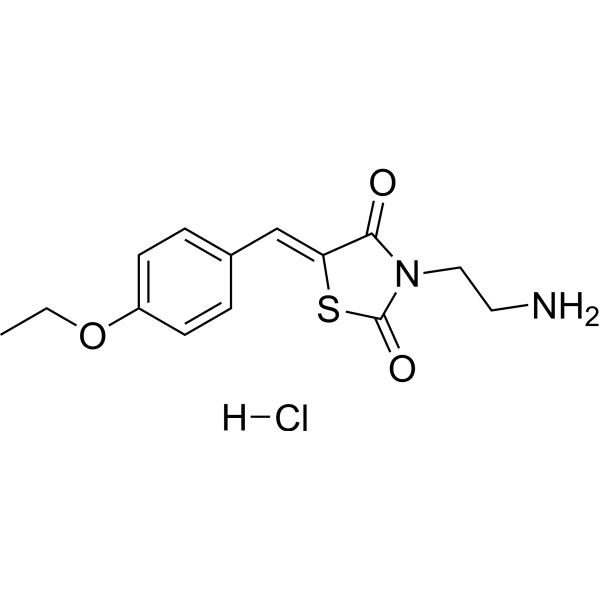
-
- HY-P1858
-
|
|
CRFR
|
Cardiovascular Disease
Neurological Disease
Endocrinology
|
|
Urocortin III, mouse is a corticotropin-releasing factor (CRF)-related peptide. Urocortin III preferentially binds and activates CRF-R2 . Urocortin III (Ucn3) is a known component of the behavioral stress response system. Urocortin III and CRF-R2 in the medial amygdala regulate complex social dynamics .
|
-
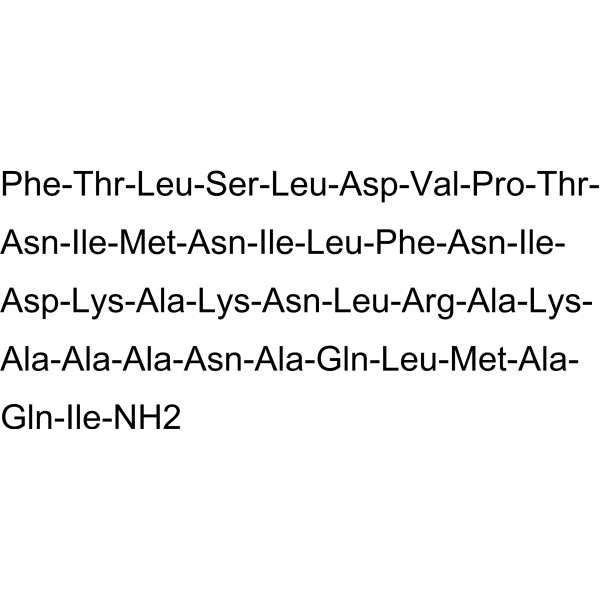
-
- HY-128855
-
|
|
mAChR
|
Neurological Disease
|
|
Talsaclidine is a muscarinic agonist with preferential neuron-stimulating properties. Talsaclidine is a full agonist at the M1 subtype, and as a partial agonist at the M2 and M3 subtypes . Talsaclidine is a click chemistry reagent, it contains an Alkyne group and can undergo copper-catalyzed azide-alkyne cycloaddition (CuAAc) with molecules containing Azide groups.
|
-

-
- HY-P1858A
-
|
|
CRFR
|
Cardiovascular Disease
Neurological Disease
Endocrinology
|
|
Urocortin III, mouse TFA is a corticotropin-releasing factor (CRF)-related peptide. Urocortin III preferentially binds and activates CRF-R2 . Urocortin III (Ucn3) is a known component of the behavioral stress response system. Urocortin III and CRF-R2 in the medial amygdala regulate complex social dynamics .
|
-

-
- HY-13299
-
MK-8033
2 Publications Verification
|
c-Met/HGFR
|
Cancer
|
|
MK-8033 is an orally active ATP competitive c-Met/Ron dual inhibitor (IC50s: 1 nM (c-Met),7 nM (Ron)), with preferential binding to the activated kinase conformation. MK-8033 can be used in the research of cancers, such as breast and bladder cancers, non-small cell lung cancers (NSCLCs) .
|
-

-
- HY-13299A
-
|
|
c-Met/HGFR
|
Cancer
|
|
MK-8033 hydrochloride is an orally active ATP competitive c-Met/Ron dual inhibitor (IC50s: 1 nM (c-Met),7 nM (Ron)), with preferential binding to the activated kinase conformation. MK-8033 hydrochloride can be used in the research of cancers, such as breast and bladder cancers, non-small cell lung cancers (NSCLCs) .
|
-

-
- HY-B0619
-
|
CN100
|
COX
|
Inflammation/Immunology
|
|
Zaltoprofen (CN100), a non-steroidal anti-inflammatory drug (NSAID), is a preferential and orally active COX-2 inhibitor, with IC50s of 1.3 and 0.34 μM for COX-1 and COX-2, respectively. Zaltoprofen exhibits powerful anti-inflammatory effects as well as an analgesic action on inflammatory pain .
|
-
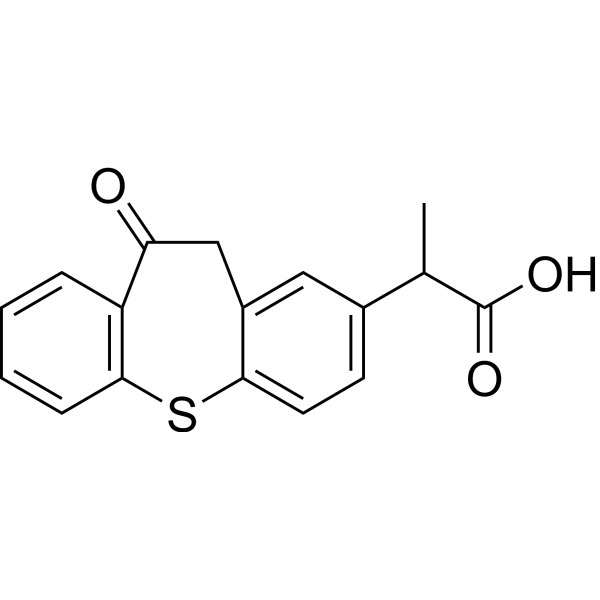
-
- HY-16688
-
|
|
5-HT Receptor
|
Neurological Disease
|
|
RU 24969 is a preferential 5-HT1B agonist, with a Ki of 0.38 nM, but also displays appreciable affinity for the 5-HT1A receptor (Ki=2.5 nM), and has low affinity for other receptor sites in the brain. RU 24969 could decrease fluid consumption and increase forward locomotion .
|
-
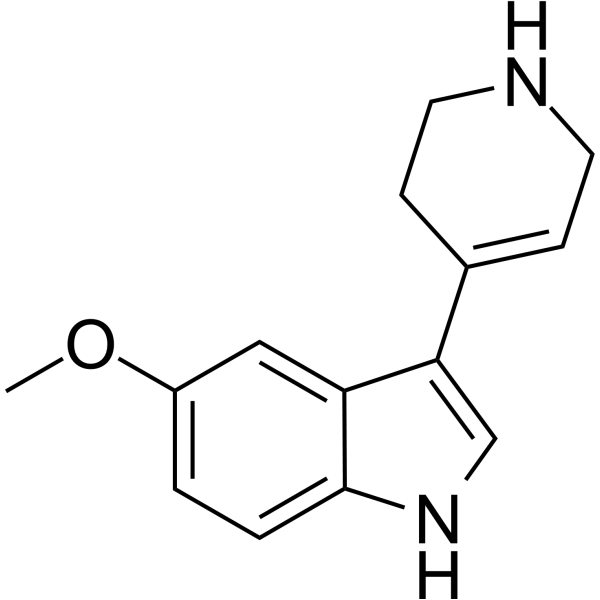
-
- HY-101254
-
|
N-0774
|
|
|
|
Luzindole (N-0774) is a selective melatonin receptor antagonist. Luzindole preferentially targets MT2 (Mel1b) over MT1 (Mel1a) with Ki values of 10.2 and 158 nM for human MT2 and MT1, respectively. Luzindole suppresses experimental autoimmune encephalomyelitis (EAE), and exerts antidepressant-like activity .
|
-
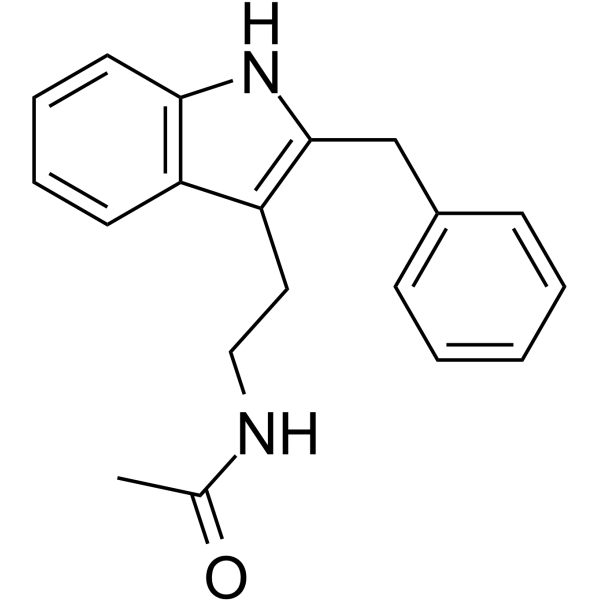
-
- HY-110188
-
|
|
Apoptosis
|
Neurological Disease
|
|
BiP inducer X, a selective inducer of immunoglobulin heavy chain binding protein (BiP)/GRP78, is an effective ER (endoplasmic reticulum) stress inhibitor. BiP inducer X preferentially induces BiP with slight inductions of GRP94, calreticulin, and C/EBP homologous protein. BiP inducer X protects neurons from ER stress .
|
-

- HY-D1738
-
|
4',6-Diamidino-2-phenylindole dilactate
|
Fluorescent Dye
|
|
|
DAPI (dilactate) is a blue fluorescent dye that preferentially binds dsDNA and binds to minor groove AT clusters. DAPI (dilactate) is combined with dsDNA, and the fluorescence was enhanced about 20-fold. DAPI (dilactate) can be used to identify the cell cycle and specifically stains the nucleus but not the cytoplasm. DAPI (dilactate) form is more soluble in water than DAPI (dihydrochloride) form.
|
-
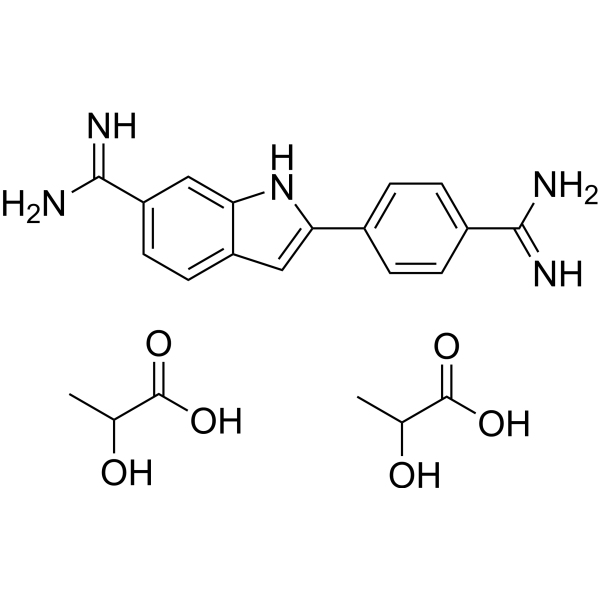
- HY-130354
-
|
Bt2cGMP sodium
|
Potassium Channel
|
Cardiovascular Disease
|
|
Dibutyryl-cGMP sodium (Bt2cGMP sodium) is a cell-permeable cGMP analogue. Dibutyryl-cGMP sodium preferentially activates cGMP-dependent protein kinase (PKG). Dibutyryl-cGMP sodium inhibits the release of [ 3H]-arachidonic acid from γ thrombin-stimulated human platelets. Dibutyryl-cGMP sodium induces peripheral antinociception via activation of ATP-sensitive K + channels .
|
-
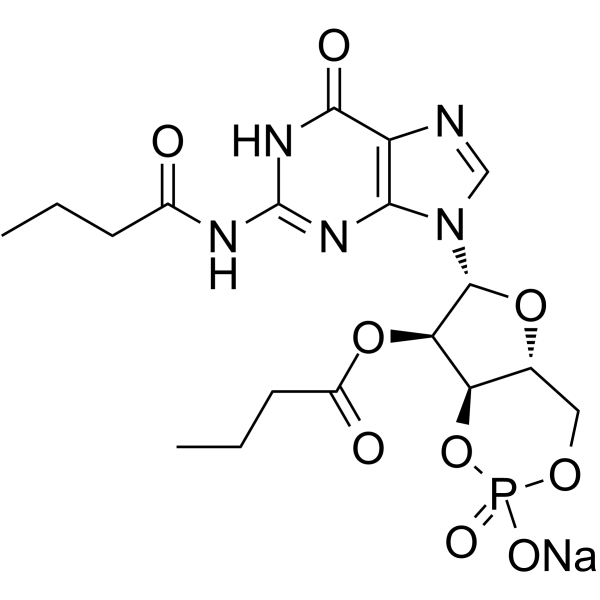
- HY-16688B
-
|
|
5-HT Receptor
|
Neurological Disease
|
|
RU 24969 hemisuccinate is a preferential 5-HT1B agonist, with a Ki of 0.38 nM, but also displays appreciable affinity for the 5-HT1A receptor (Ki=2.5 nM), and has low affinity for other receptor sites in the brain. RU 24969 hemisuccinate could decrease fluid consumption and increase forward locomotion .
|
-
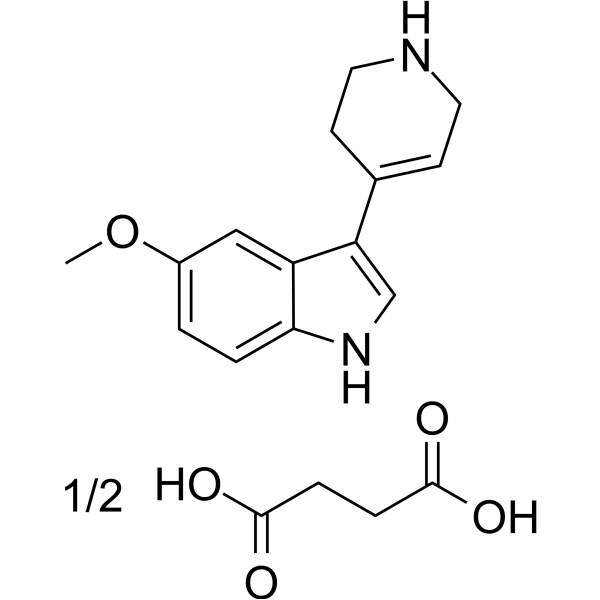
- HY-P3517
-
|
β-EP (6-31), human
|
Opioid Receptor
|
Neurological Disease
Endocrinology
|
|
β-Endorphin, an endogenous opioid neuropeptide, is an opioid receptor agonist. β-Endorphin binds preferentially to μ-opioid receptors and is produced in certain neurons of the central and peripheral nervous system and is one of three endorphins produced in humans. β-Endorphin can be used to reduce stress and maintain homeostasis in the body and is involved in neurological pain perception regulation .
|
-

- HY-75800
-
|
VX-222
|
DNA/RNA Synthesis
HCV
|
Infection
|
|
Lomibuvir (VX-222), a selective, non-nucleoside polymerase inhibitor, targets thumb pocket 2 of the HCV NS5B polymerase (RdRp) with a Kd of 17 nM. Lomibuvir inhibits the 1b/Con1 HCV subgenomic replicon with an EC50 of 5.2 nM. Lomibuvir preferentially inhibits elongative RNA synthesis rather than de novo-initiated RNA synthesis .
|
-
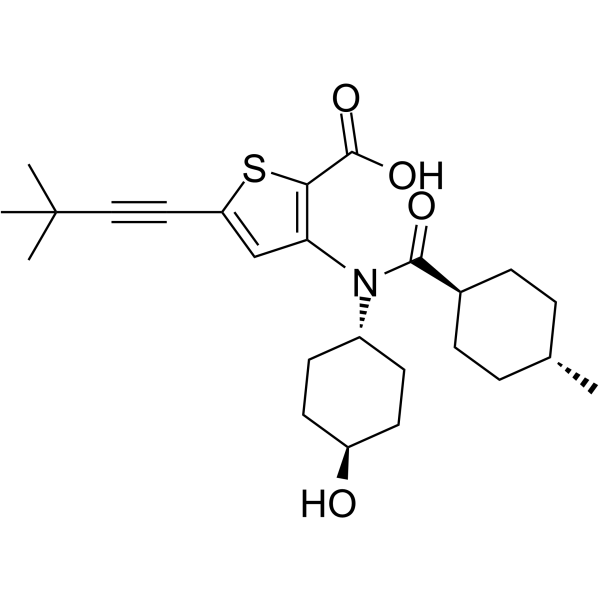
- HY-P0270
-
|
Magainin II
|
Bacterial
Antibiotic
Fungal
|
Infection
|
|
Magainin 2 (Magainin II) is an antimicrobial peptide (AMP) isolated from the skin of the African clawed frog Xenopus laevis. Magainin 2 displays antibiotic activity against numerous gram-negative and gram-positive bacteria. Magainin 2 also is active against protozoa . Magainin 2 exerts its cytotoxicity effects by preferential interactions with anionic phospholipids abundant in bacterial membranes .
|
-

- HY-126020
-
|
|
DNA/RNA Synthesis
RAD51
|
Cancer
|
|
Bractoppin is a potent and selective agent-like inhibitor of phosphopeptide recognition by the human BRCA1 tandem(t) BRCT domain (binding IC50: 74 nM). Bractoppin diminishes BRCA1 recruitment to DNA breaks, in turn suppressing damage-induced G2 arrest and assembly of the recombinase, RAD51. Bractoppin preferentially inhibits BRCA1 tBRCT-dependent steps in the DNA damage response .
|
-
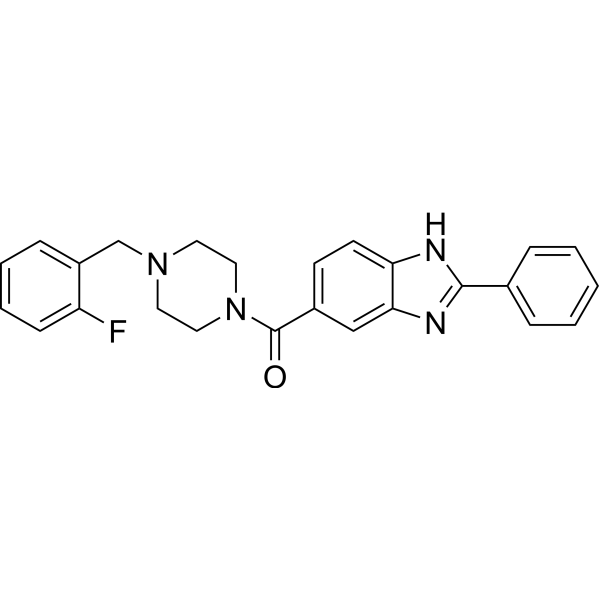
- HY-P3654
-
|
|
nAChR
|
Neurological Disease
|
|
α-Conotoxin SIA is a selective nicotinic acetylcholine receptor (nAChR) antagonist with high affinity for the muscle nAChR. α-Conotoxin SIA preferentially targets the α/δ interface of the muscle nAChR in mouse muscle. In contrast, for Torpedo nAChR, α-Conotoxin SIA has a much higher affinity for the α/γ than for the α/δ interface .
|
-

- HY-148792
-
|
PRAX-562
|
Sodium Channel
|
Neurological Disease
|
|
Relutrigine (PRAX-562) is an orally active inhibitor of persistent sodium channel. Relutrigine potently and preferentially inhibits persistent INa induced by ATX-II (Nav 1.5 activator) or the SCN8A mutation N1768D with IC50 values of 141 nM and 75 nM, respectively. Relutrigine exhibits potent use-dependent block and reduces neuronal intrinsic excitability. Relutrigine has effective anticonvulsant activity .
|
-

- HY-123249
-
|
|
GABA Receptor
|
Neurological Disease
|
|
HZ166 is a GABAA receptor subtype-selective benzodiazepine site agonist with preferential activity at α2- and α3-GABAA receptors. HZ166 shows anti-hyperalgesic effects . HZ166 is a click chemistry reagent, it contains an Alkyne group and can undergo copper-catalyzed azide-alkyne cycloaddition (CuAAc) with molecules containing Azide groups.
|
-
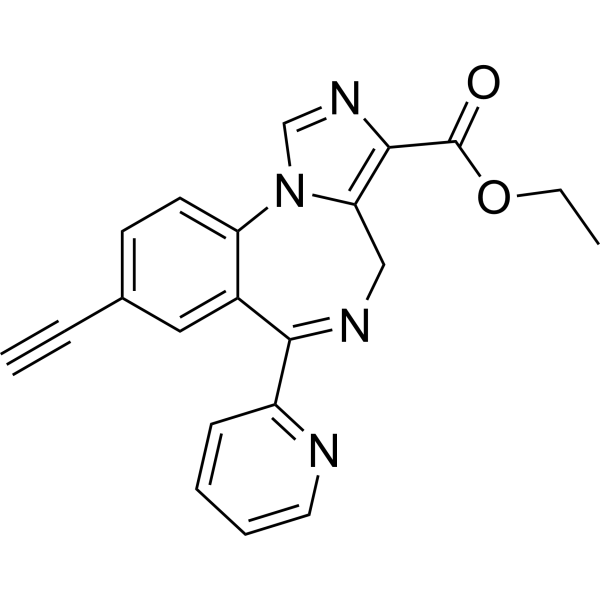
- HY-146738
-
|
|
Akt
|
Cancer
|
|
GSD-11 is a potent and selective anti-austerity agent. GSD-11 inhibits the cell migration and colony formation of PANC-1 cells. GSD-11 inhibits the Akt/mTOR signaling pathway. GSD-11 has the potential for the research of pancreatic cancer[1].
|
-
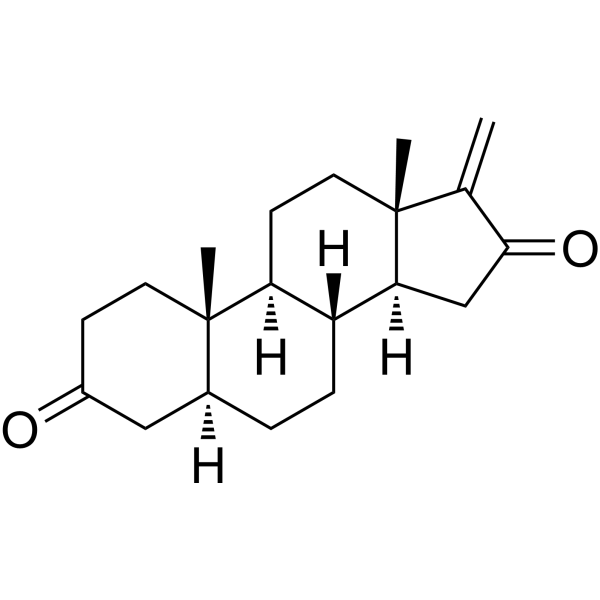
- HY-140696C
-
|
mPEG-Hydroxy (MW 20000); Polyethylene glycol monomethyl ether (MW 20000)
|
PROTAC Linkers
Liposome
|
Cancer
|
|
m-PEG-OH (MW 20000) can be used as a macroinitiator to participate in the synthesis of amphiphilic block copolymers. Nanoscale micelles can be prepared by using amphiphilic block copolymers to deliver active drugs. Paclitaxel (HY-B0015), a hydrophobic anticancer agent encapsulated in micelles, has stronger activity in killing cancer cells than free Paclitaxel. And it preferentially accumulates in tumor tissue with only limited distribution in healthy organs.
|
-
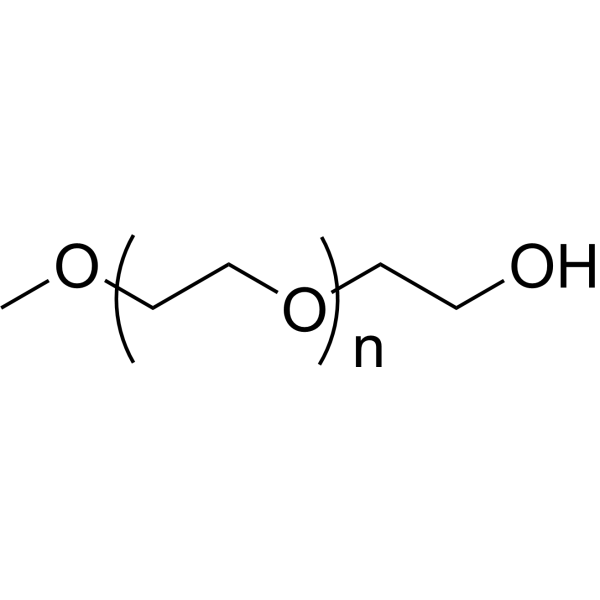
- HY-140696D
-
|
mPEG-Hydroxy (MW 10000); Polyethylene glycol monomethyl ether (MW 10000)
|
Liposome
|
Cancer
|
|
m-PEG-OH (MW 10000) can be used as a macroinitiator to participate in the synthesis of amphiphilic block copolymers. Amphiphilic block copolymers can be used to prepare nanoscale micelles to deliver active drugs. Paclitaxel (HY-B0015), a hydrophobic anticancer agent encapsulated in micelles, has stronger activity in killing cancer cells than free Paclitaxel. And it preferentially accumulates in tumor tissue with only limited distribution in healthy organs.
|
-
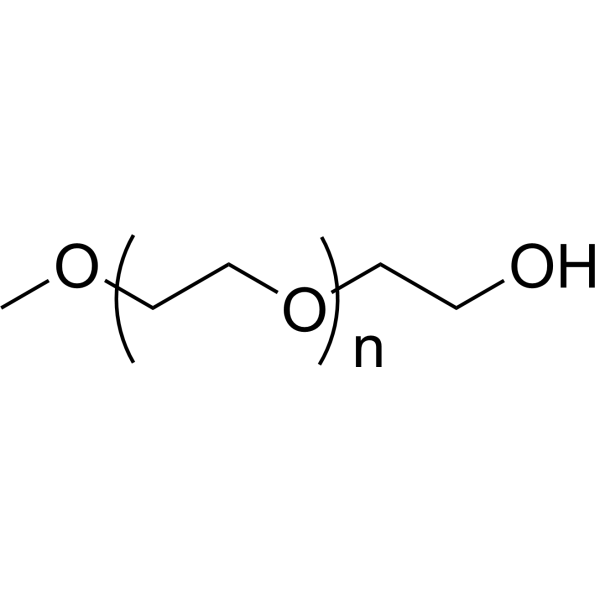
- HY-140696E
-
|
mPEG-Hydroxy (MW 1000); Polyethylene glycol monomethyl ether (MW 1000)
|
Liposome
|
Cancer
|
|
m-PEG-OH (MW 1000) can be used as a macroinitiator to participate in the synthesis of amphiphilic block copolymers. Amphiphilic block copolymers can be used to prepare nanoscale micelles to deliver active drugs. Paclitaxel (HY-B0015), a hydrophobic anticancer agent encapsulated in micelles, has stronger cancer-killing activity than free Paclitaxel. And it accumulates preferentially in tumor tissues and has only limited distribution in healthy organs.
|
-
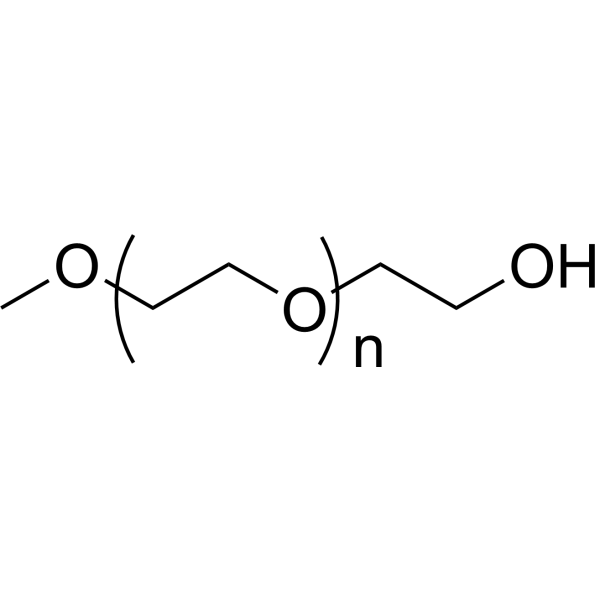
- HY-P990029
-
|
|
PD-1/PD-L1
|
Infection
Cancer
|
|
Eciskafusp alfa is a programmed cell death 1 (PDCD1, best known as PD-1) cis-targeted IL2v immunocytokine. Eciskafusp alfa preferentially targets antigen-specific stem-like PD-1+ TCF-1+ CD8+ T cells and differentiates them towards a novel population of better effectors. Eciskafusp alfa can be used for the research of cancer and chronic infections .
|
-

- HY-136569
-
|
|
Phosphodiesterase (PDE)
|
Neurological Disease
|
|
DSR-141562 is a novel, orally active, and selective brain-penetrant phosphodiesterase 1 (PDE1) inhibitor. DSR-141562 shows preferential selectivity for human PDE1B with an IC50 of 43.9 nM, and the IC50 values for human PDE1A and 1C are 97.6 and 431.8 nM, respectively. DSR-141562 can be used for the study of positive symptoms, negative symptoms and cognitive impairments associated with schizophrenia .
|
-
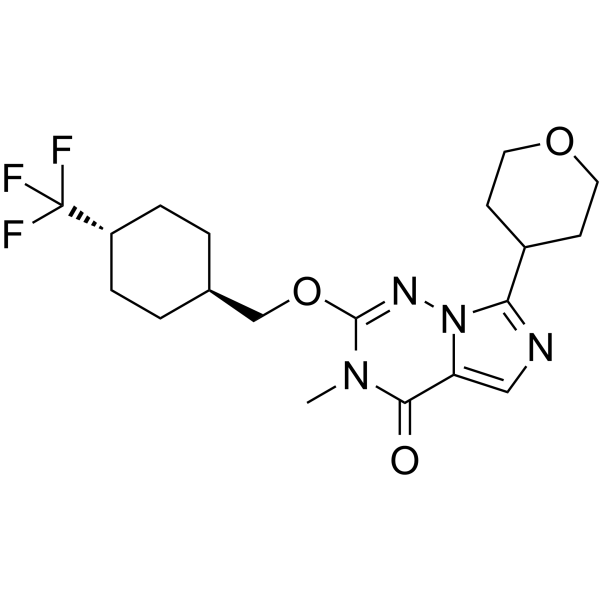
- HY-10118
-
|
|
HCV
DNA/RNA Synthesis
|
Infection
|
|
Filibuvir is an orally active, selective non-nucleoside inhibitor of the HCV nonstructural 5B protein (NS5B) RNA-dependent RNA polymerase (RdRp). Filibuvir binds noncovalently in the thumb II allosteric pocket of NS5B. Filibuvir inhibits genotype 1a and 1b replicons with EC50s of 59 nM for both isoforms, respectively . Filibuvir preferentially inhibits elongative RNA synthesis and potently decreases viral RNA accumulation .
|
-

- HY-B0619S1
-
|
|
Isotope-Labeled Compounds
COX
|
Inflammation/Immunology
|
|
Zaltoprofen- 13C,d3 is the 13C- and deuterium labeled Zaltoprofen. Zaltoprofen (CN100), a non-steroidal anti-inflammatory drug (NSAID), is a preferential and orally active COX-2 inhibitor, with IC50s of 1.3 and 0.34 μM for COX-1 and COX-2, respectively. Zaltoprofen exhibits powerful anti-inflammatory effects as well as an analgesic action on inflammatory pain[1][2][3].
|
-
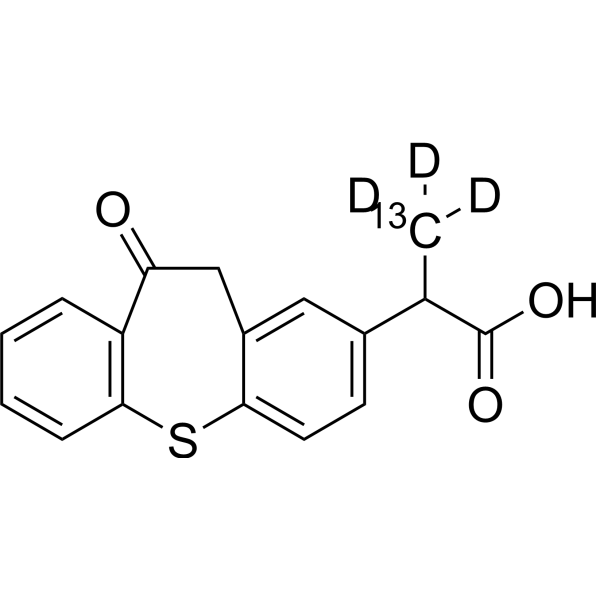
- HY-122912
-
|
ALDH1Ai 673A
|
Aldehyde Dehydrogenase (ALDH)
Necroptosis
|
Cancer
|
|
ALDH1A inhibitor 673A is an ALDH1A inhibitor. ALDH1A inhibitor 673A inhibits all three ALDH1A family members (IC50: 246 nM, 230 nM, 348 nM for ALDH1A1, ALDH1A2, ALDH1A3 respectively. ALDH1A inhibitor 673A induces necroptotic cell death preferentially in CD133+ ovarian CSCs. ALDH1A inhibitor 673A also inhibits chemotherapy-resistant tumor growth .
|
-
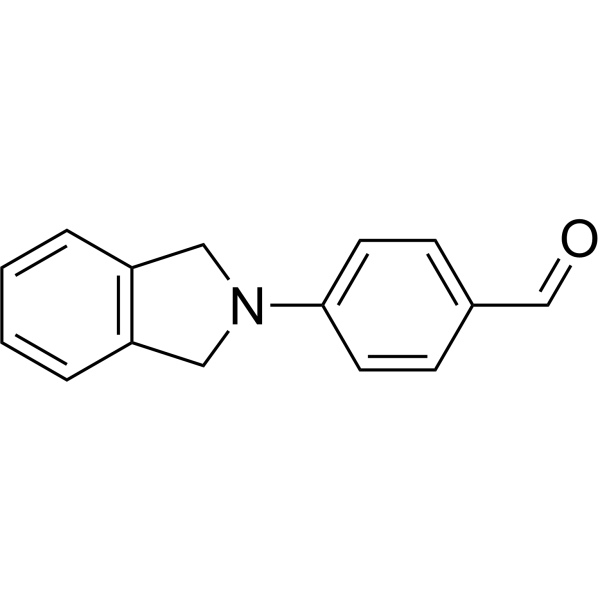
- HY-12650S
-
|
DS5565-13C2,d1 (Mixture of Diastereomers)
|
Isotope-Labeled Compounds
|
Others
|
|
Mirogabalin-13C2,d1 (Mixture of Diastereomers) is a C13 and deuterium labeled Mirogabalin. Mirogabalin (DS-5565) is a novel, preferentially selective α2δ-1 ligand characterized by high potency and selectivity to the α2δ-1 subunit of voltage-sensitive calcium channel complexes in the CNS .
|
-

- HY-P1220
-
|
|
Sodium Channel
|
Neurological Disease
|
|
Huwentoxin-IV is a potent and selective sodium channel blocker, inhibits neuronal Nav1.7, Nav1.2, Nav1.3 and Nav1.4 with IC50s of 26, 150, 338 and 400 nM, respectively. Huwentoxin-IV preferentially blocks peripheral nerve subtype Nav1.7 by binding neurotoxin receptor site 4. Huwentoxin-IV has analgesic effects on animal models of inflammatory and neuropathic pain .
|
-
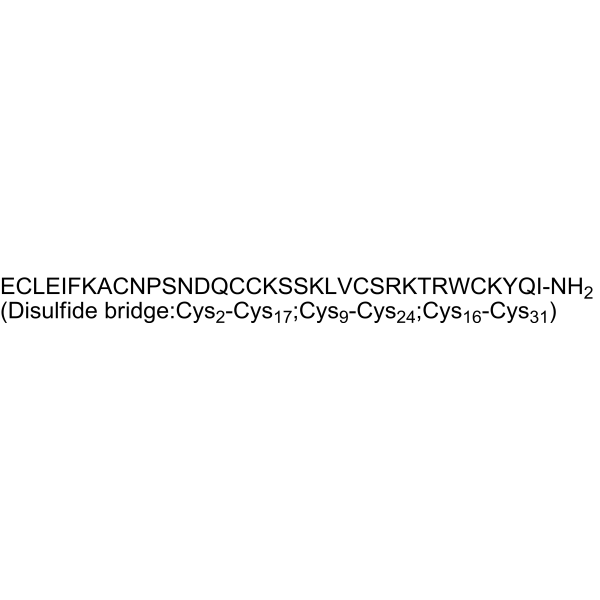
- HY-P1220A
-
|
|
Sodium Channel
|
Neurological Disease
|
|
Huwentoxin-IV TFA is a potent and selective sodium channel blocker, inhibits neuronal Nav1.7, Nav1.2, Nav1.3 and Nav1.4 with IC50s of 26, 150, 338 and 400 nM, respectively. Huwentoxin-IV TFA preferentially blocks peripheral nerve subtype Nav1.7 by binding neurotoxin receptor site 4. Huwentoxin-IV TFA has analgesic effects on animal models of inflammatory and neuropathic pain .
|
-

- HY-101849
-
|
|
GLUT
TNF Receptor
Apoptosis
|
Cardiovascular Disease
Cancer
|
|
Fasentin, a potent glucose uptake inhibitor, inhibits GLUT-1/GLUT-4 transporters. Fasentin preferentially inhibits GLUT4 (IC50=68 μM) over GLUT1. Fasentin is a death receptor stimuli (FAS) sensitizer and sensitizes cells to FAS-induced cell death. Fasentin is also a tumor necrosis factor (TNF) apoptosis-inducing ligand sensitizer. Fasentin blocks glucose uptake in cancer cell lines and has anti-angiogenic activity .
|
-

- HY-141512
-
|
|
PROTACs
Aurora Kinase
|
Cancer
|
|
JB170 is a potent and highly specific PROTAC-mediated AURORA-A (Aurora Kinase) degrader (DC50=28 nM) by linking Alisertib, to the Cereblon-binding molecule Thalidomide. JB170 preferentially binds AURORA-A (EC50=193 nM) over AURORA-B (EC50=1.4 µM). JB170-mediated S-phase arrest is caused specifically by AURORA-A depletion. JB170 has excellent ability to inhibit non-catalytic function of AURORA-A kinase .
|
-

- HY-117523
-
|
(Z)-Tyrphostin RG13022
|
EGFR
|
Cancer
|
|
(Z)-RG-13022 is a tyrosine kinase (TK) inhibitor, which inhibits preferentially the TK activity of the EGF receptor and inhibits EGF-stimulated growth of cultured cells. (Z)-RG-13022 exerts an IC50 of 11 μM for DNA synthesis in the HN5 cells, which is 3 times more potent than (E)-RG-13022 (IC50=38 μM). (Z)-RG-13022 can be used for research of breast cancer cells .
|
-
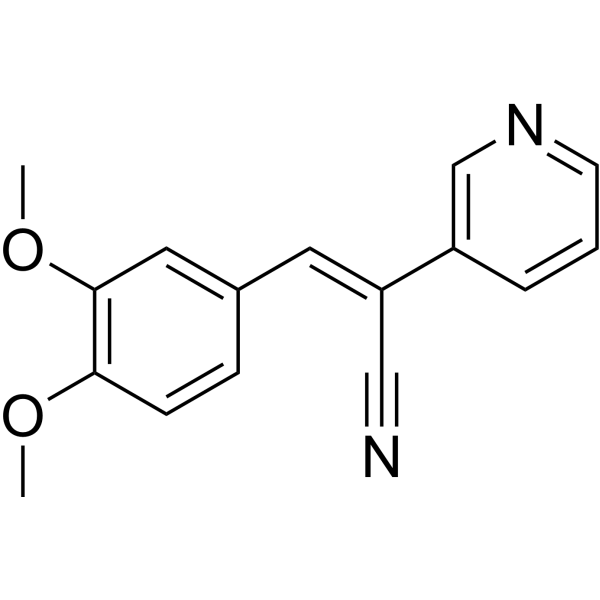
- HY-129619
-
|
|
SNIPERs
Estrogen Receptor/ERR
|
Cancer
|
|
SNIPER(ER)-87 consists of an inhibitor of apoptosis protein (IAP) ligand LCL161 derivative that is conjugated to the estrogen receptor α (ERα) ligand 4-hydroxytamoxifen by a PEG linker, and efficiently degrades the ERα protein (IC50=0.097 μM). SNIPER(ER)-87 preferentially recruits XIAP to ERα in the cells, and XIAP is the primary E3 ubiquitin ligase responsible for the SNIPER(ER)-87-induced ERα degradation .
|
-
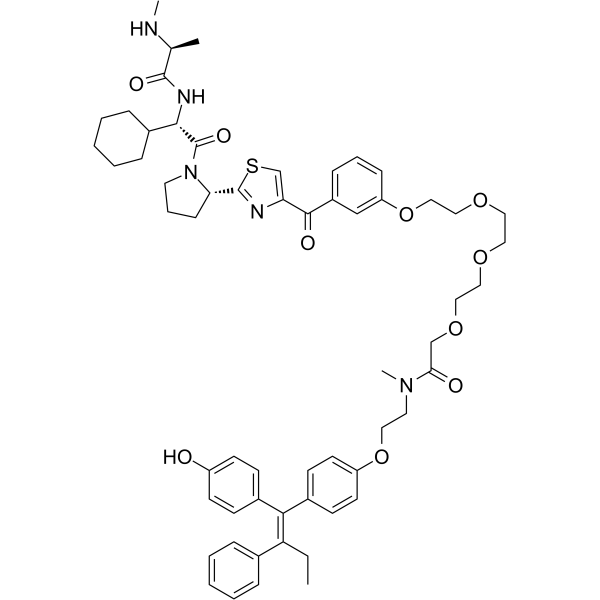
- HY-D1444
-
|
|
Fluorescent Dye
|
Infection
|
|
Propidium monoazide is a photoreactive DNA-binding dye that preferentially binds to dsDNA. Propidium monoazide (PMA) prevents DNA from dead bacteria from being amplified during the PCR. PMA-PCR enhanced both the specificity and the sensitivity of PCR . Propidium monoazide is a click chemistry reagent, it contains an Azide group and can undergo copper-catalyzed azide-alkyne cycloaddition reaction (CuAAc) with molecules containing Alkyne groups. Strain-promoted alkyne-azide cycloaddition (SPAAC) can also occur with molecules containing DBCO or BCN groups.
|
-
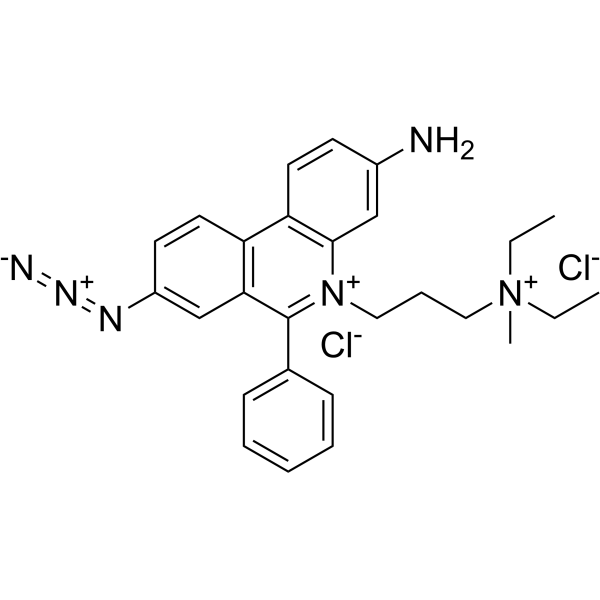
- HY-129453
-
|
|
Integrin
|
Inflammation/Immunology
|
|
BOP sodium is a potent and selective dual α9β1/α4β1 integrin inhibitor with Kd values in the picomolar range. BOP sodium shows the rapid and preferential mobilization of hematopoietic stem cell (HSC) and progenitors. BOP sodium has little inhibitory activity on α4β7, α1β1, α2β1, and α5β1, αIIBβ3 integrins .
|
-
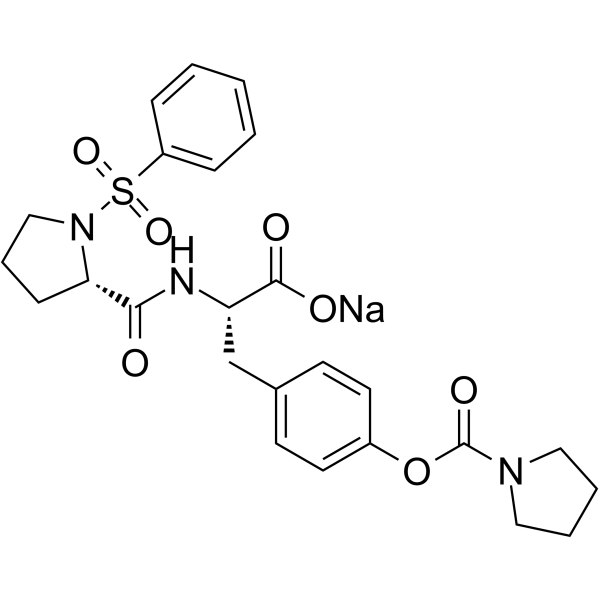
- HY-136182
-
|
|
Na+/Ca2+ Exchanger
|
Cardiovascular Disease
Neurological Disease
|
|
YM-244769 dihydrochloride is a potent, selective and orally active Na +/Ca 2+ exchanger (NCX) inhibitor. YM-244769 dihydrochloride preferentially inhibits NCX3 and suppresses the unidirectional outward NCX current (Ca 2+ entry mode), with IC50s of 18 nM and 50 nM, respectively. YM-244769 dihydrochloride efficiently protects against hypoxia/reoxygenation-induced SH-SY5Y neuronal cell damage. YM-244769 dihydrochloride can also increase urine volume and urinary excretion of electrolytes in mice .
|
-

- HY-136182A
-
|
|
Na+/Ca2+ Exchanger
|
Cardiovascular Disease
Neurological Disease
|
|
YM-244769 is a potent, selective and orally active Na +/Ca 2+ exchanger (NCX) inhibitor. YM-244769 preferentially inhibits NCX3 and suppresses the unidirectional outward NCX current (Ca 2+ entry mode), with IC50s of 18 nM and 50 nM, respectively. YM-244769 efficiently protects against hypoxia/reoxygenation-induced SH-SY5Y neuronal cell damage. YM-244769 can also increase urine volume and urinary excretion of electrolytes in mice .
|
-

- HY-107659
-
|
|
Na+/Ca2+ Exchanger
|
Cardiovascular Disease
Neurological Disease
|
|
YM-244769 hydrochloride is a potent, selective and orally active Na +/Ca 2+ exchanger (NCX) inhibitor. YM-244769 hydrochloride preferentially inhibits NCX3 and suppresses the unidirectional outward NCX current (Ca 2+ entry mode), with IC50s of 18 nM and 50 nM, respectively. YM-244769 hydrochloride efficiently protects against hypoxia/reoxygenation-induced SH-SY5Y neuronal cell damage. YM-244769 hydrochloride can also increase urine volume and urinary excretion of electrolytes in mice .
|
-

- HY-P3019
-
|
|
CRFR
|
Cardiovascular Disease
Neurological Disease
Endocrinology
|
|
Urocortin III (human) is a corticotropin-releasing factor (CRF)-related peptide. Urocortin III (human) preferentially binds and activates CRF-R2 and has a discrete central nervous system and peripheral distribution. Urocortin III (human) selectively binds to type 2 CRF receptors with Ki values of 13.5, 21.7, and >100 nM for mCRF2β, rCRF2α, and hCRF1, respectively. Urocortin III (human) mediates somatostatin-dependent negative feedback control of Insulin (human) (HY-P0035) secretion .
|
-
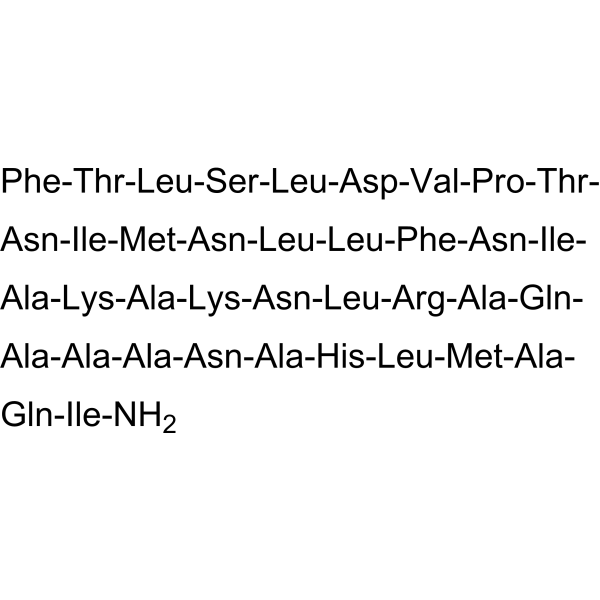
- HY-135680
-
|
I-OMe-AG 538
|
IGF-1R
|
Metabolic Disease
Cancer
|
|
I-OMe-Tyrphostin AG 538 (I-OMe-AG 538) is a specific inhibitor of IGF-1R (insulin-like growth factor-1 receptor tyrosine kinase). I-OMe-Tyrphostin AG 538 inhibits IGF-1R-mediated signaling and is preferentially cytotoxic to nutrient-deprived PANC1 cells. I-OMe-Tyrphostin AG 538 is an ATP-competitive inhibitor of phosphatidylinositol-5-phosphate 4-kinase α (PI5P4Kα), with an IC50 of 1 µM .
|
-

- HY-114571
-
|
cis-VX-222
|
DNA/RNA Synthesis
HCV
|
Infection
|
|
cis-Lomibuvir (cis-VX-222) is the cis-isomer of Lomibuvir. Lomibuvir (VX-222), a selective, non-nucleoside polymerase inhibitor, targets thumb pocket 2 of the HCV NS5B polymerase (RdRp) with a Kd of 17 nM. Lomibuvir inhibits the 1b/Con1 HCV subgenomic replicon with an EC50 of 5.2 nM. Lomibuvir preferentially inhibits elongative RNA synthesis rather than de novo-initiated RNA synthesis . cis-Lomibuvir is a click chemistry reagent, it contains an Alkyne group and can undergo copper-catalyzed azide-alkyne cycloaddition (CuAAc) with molecules containing Azide groups.
|
-
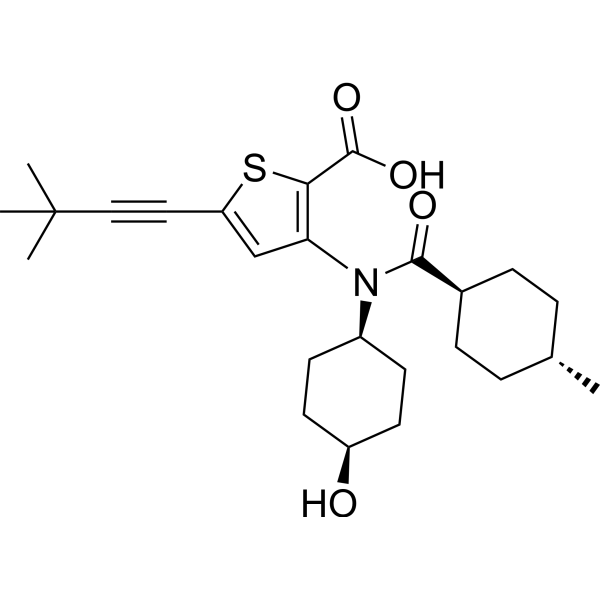
- HY-10015
-
|
5-(4-Phenoxybutoxy)psoralen
|
Potassium Channel
|
Inflammation/Immunology
|
|
PAP-1 (5-(4-Phenoxybutoxy)psoralen) is a potent, selective, and orally active Kv1.3 blocker (EC50=2 nM). PAP-1 blocks Kv1.3 in a use-dependent manner and acts by preferentially binding to the C-type inactivated state of the channel. PAP-1 exhibits 23-fold selectivity over Kv1.5 (EC50=45 nM), and further displays 33- to 125-fold selectivity over all other Kv1-family channels. PAP-1 does not exhibit cytotoxic or phototoxic effects .
|
-
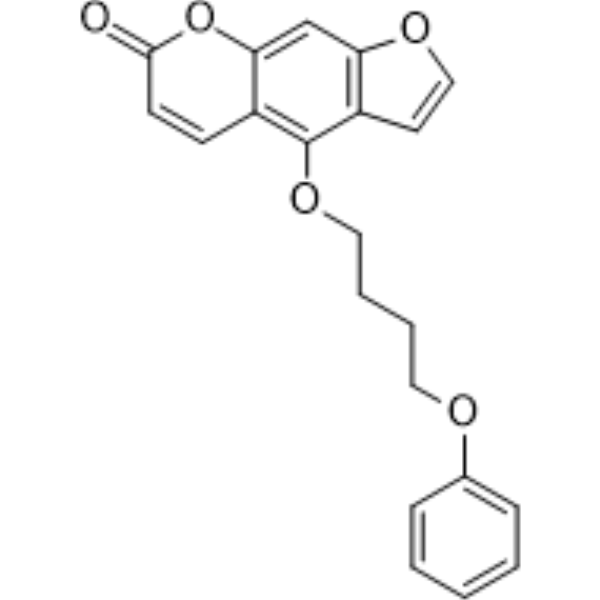
- HY-103693
-
NAZ2329
1 Publications Verification
|
Phosphatase
|
Cancer
|
|
NAZ2329, the first cell-permeable inhibitor of R5 subfamily of receptor-type protein tyrosine phosphatases (RPTPs), allosterically and preferentially inhibits PTPRZ (IC50=7.5 µM for hPTPRZ1) and PTPRG (IC50=4.8 µM for hPTPRG) over other PTPs. NAZ2329 binds to the active D1 domain and more potently inhibits PTPRZ-D1 fragment (IC50 of 1.1 µM) than the whole intracellular (D1 + D2) fragment (IC50 of 7.5 µM). NAZ2329 can effectively inhibit tumor growth of the glioblastoma cells and suppress stem cell-like properties .
|
-
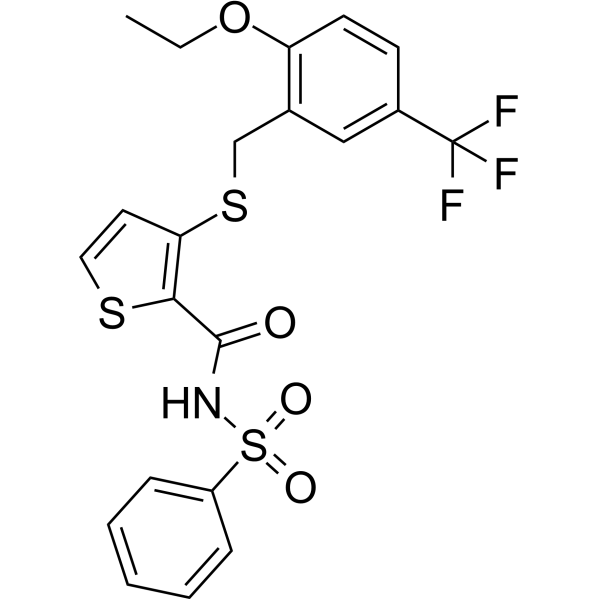
| Cat. No. |
Product Name |
Type |
-
- HY-D1444
-
|
|
DNA Stain
|
|
Propidium monoazide is a photoreactive DNA-binding dye that preferentially binds to dsDNA. Propidium monoazide (PMA) prevents DNA from dead bacteria from being amplified during the PCR. PMA-PCR enhanced both the specificity and the sensitivity of PCR . Propidium monoazide is a click chemistry reagent, it contains an Azide group and can undergo copper-catalyzed azide-alkyne cycloaddition reaction (CuAAc) with molecules containing Alkyne groups. Strain-promoted alkyne-azide cycloaddition (SPAAC) can also occur with molecules containing DBCO or BCN groups.
|
-
- HY-D1738
-
|
4',6-Diamidino-2-phenylindole dilactate
|
Fluorescent Dyes/Probes
|
|
DAPI (dilactate) is a blue fluorescent dye that preferentially binds dsDNA and binds to minor groove AT clusters. DAPI (dilactate) is combined with dsDNA, and the fluorescence was enhanced about 20-fold. DAPI (dilactate) can be used to identify the cell cycle and specifically stains the nucleus but not the cytoplasm. DAPI (dilactate) form is more soluble in water than DAPI (dihydrochloride) form.
|
| Cat. No. |
Product Name |
Type |
-
- HY-156857
-
|
|
Drug Delivery
|
|
PPZ-A10 is a ionizable lipid that delivered mRNA preferentially to liver and spleen immune cells.
|
-
- HY-140696E
-
|
mPEG-Hydroxy (MW 1000); Polyethylene glycol monomethyl ether (MW 1000)
|
Drug Delivery
|
|
m-PEG-OH (MW 1000) can be used as a macroinitiator to participate in the synthesis of amphiphilic block copolymers. Amphiphilic block copolymers can be used to prepare nanoscale micelles to deliver active drugs. Paclitaxel (HY-B0015), a hydrophobic anticancer agent encapsulated in micelles, has stronger cancer-killing activity than free Paclitaxel. And it accumulates preferentially in tumor tissues and has only limited distribution in healthy organs.
|
-
- HY-153737
-
|
|
Drug Delivery
|
|
113-N16B is an ionizable cationic lipid used for the generation of lipid nanoparticles (LNPs). 113-N16B delivers mRNA preferentially to pulmonary endothelial cells.
|
-
- HY-140696C
-
|
mPEG-Hydroxy (MW 20000); Polyethylene glycol monomethyl ether (MW 20000)
|
Drug Delivery
|
|
m-PEG-OH (MW 20000) can be used as a macroinitiator to participate in the synthesis of amphiphilic block copolymers. Nanoscale micelles can be prepared by using amphiphilic block copolymers to deliver active drugs. Paclitaxel (HY-B0015), a hydrophobic anticancer agent encapsulated in micelles, has stronger activity in killing cancer cells than free Paclitaxel. And it preferentially accumulates in tumor tissue with only limited distribution in healthy organs.
|
-
- HY-140696D
-
|
mPEG-Hydroxy (MW 10000); Polyethylene glycol monomethyl ether (MW 10000)
|
Drug Delivery
|
|
m-PEG-OH (MW 10000) can be used as a macroinitiator to participate in the synthesis of amphiphilic block copolymers. Amphiphilic block copolymers can be used to prepare nanoscale micelles to deliver active drugs. Paclitaxel (HY-B0015), a hydrophobic anticancer agent encapsulated in micelles, has stronger activity in killing cancer cells than free Paclitaxel. And it preferentially accumulates in tumor tissue with only limited distribution in healthy organs.
|
| Cat. No. |
Product Name |
Target |
Research Area |
-
- HY-P2355
-
-
- HY-P4903
-
|
|
Peptides
|
Cancer
|
|
RGD-targeted Proapoptotic Peptide is a peptide. The C-terminal RGD-4C peptide (ACDCRGDCFC) binds preferentially to integrins at sites of tumor angiogenesis.
|
-
- HY-P2355A
-
-
- HY-P10036
-
|
|
PKG
|
Others
|
|
G-Subtide is a G-substrate peptide localized in Purkinje cells of the cerebellum. G-Subtide has little activity distinct from background and is a preferentially phosphorylated peptide substrate of recombinant PfPKG2 protein .
|
-
- HY-P3035
-
|
|
G Protein-coupled Receptor Kinase (GRK)
|
Neurological Disease
|
|
Corazonin is a highly conserved neuropeptide hormone of wide-spread occurrence in insects, serves a central regulator of caste identity and behavior in social insects. Corazonin is also preferentially expressed in workers and/or foragers from other social insect species .
|
-
- HY-P1858
-
|
|
CRFR
|
Cardiovascular Disease
Neurological Disease
Endocrinology
|
|
Urocortin III, mouse is a corticotropin-releasing factor (CRF)-related peptide. Urocortin III preferentially binds and activates CRF-R2 . Urocortin III (Ucn3) is a known component of the behavioral stress response system. Urocortin III and CRF-R2 in the medial amygdala regulate complex social dynamics .
|
-
- HY-P1858A
-
|
|
CRFR
|
Cardiovascular Disease
Neurological Disease
Endocrinology
|
|
Urocortin III, mouse TFA is a corticotropin-releasing factor (CRF)-related peptide. Urocortin III preferentially binds and activates CRF-R2 . Urocortin III (Ucn3) is a known component of the behavioral stress response system. Urocortin III and CRF-R2 in the medial amygdala regulate complex social dynamics .
|
-
- HY-P3517
-
|
β-EP (6-31), human
|
Opioid Receptor
|
Neurological Disease
Endocrinology
|
|
β-Endorphin, an endogenous opioid neuropeptide, is an opioid receptor agonist. β-Endorphin binds preferentially to μ-opioid receptors and is produced in certain neurons of the central and peripheral nervous system and is one of three endorphins produced in humans. β-Endorphin can be used to reduce stress and maintain homeostasis in the body and is involved in neurological pain perception regulation .
|
-
- HY-P0270
-
|
Magainin II
|
Bacterial
Antibiotic
Fungal
|
Infection
|
|
Magainin 2 (Magainin II) is an antimicrobial peptide (AMP) isolated from the skin of the African clawed frog Xenopus laevis. Magainin 2 displays antibiotic activity against numerous gram-negative and gram-positive bacteria. Magainin 2 also is active against protozoa . Magainin 2 exerts its cytotoxicity effects by preferential interactions with anionic phospholipids abundant in bacterial membranes .
|
-
- HY-P3654
-
|
|
nAChR
|
Neurological Disease
|
|
α-Conotoxin SIA is a selective nicotinic acetylcholine receptor (nAChR) antagonist with high affinity for the muscle nAChR. α-Conotoxin SIA preferentially targets the α/δ interface of the muscle nAChR in mouse muscle. In contrast, for Torpedo nAChR, α-Conotoxin SIA has a much higher affinity for the α/γ than for the α/δ interface .
|
-
- HY-P1220
-
|
|
Sodium Channel
|
Neurological Disease
|
|
Huwentoxin-IV is a potent and selective sodium channel blocker, inhibits neuronal Nav1.7, Nav1.2, Nav1.3 and Nav1.4 with IC50s of 26, 150, 338 and 400 nM, respectively. Huwentoxin-IV preferentially blocks peripheral nerve subtype Nav1.7 by binding neurotoxin receptor site 4. Huwentoxin-IV has analgesic effects on animal models of inflammatory and neuropathic pain .
|
-
- HY-P1220A
-
|
|
Sodium Channel
|
Neurological Disease
|
|
Huwentoxin-IV TFA is a potent and selective sodium channel blocker, inhibits neuronal Nav1.7, Nav1.2, Nav1.3 and Nav1.4 with IC50s of 26, 150, 338 and 400 nM, respectively. Huwentoxin-IV TFA preferentially blocks peripheral nerve subtype Nav1.7 by binding neurotoxin receptor site 4. Huwentoxin-IV TFA has analgesic effects on animal models of inflammatory and neuropathic pain .
|
-
- HY-P3019
-
|
|
CRFR
|
Cardiovascular Disease
Neurological Disease
Endocrinology
|
|
Urocortin III (human) is a corticotropin-releasing factor (CRF)-related peptide. Urocortin III (human) preferentially binds and activates CRF-R2 and has a discrete central nervous system and peripheral distribution. Urocortin III (human) selectively binds to type 2 CRF receptors with Ki values of 13.5, 21.7, and >100 nM for mCRF2β, rCRF2α, and hCRF1, respectively. Urocortin III (human) mediates somatostatin-dependent negative feedback control of Insulin (human) (HY-P0035) secretion .
|
| Cat. No. |
Product Name |
Target |
Research Area |
-
- HY-P990029
-
|
|
PD-1/PD-L1
|
Infection
Cancer
|
|
Eciskafusp alfa is a programmed cell death 1 (PDCD1, best known as PD-1) cis-targeted IL2v immunocytokine. Eciskafusp alfa preferentially targets antigen-specific stem-like PD-1+ TCF-1+ CD8+ T cells and differentiates them towards a novel population of better effectors. Eciskafusp alfa can be used for the research of cancer and chronic infections .
|
| Cat. No. |
Product Name |
Category |
Target |
Chemical Structure |
| Cat. No. |
Product Name |
Chemical Structure |
-
- HY-B0619S1
-
|
|
|
Zaltoprofen- 13C,d3 is the 13C- and deuterium labeled Zaltoprofen. Zaltoprofen (CN100), a non-steroidal anti-inflammatory drug (NSAID), is a preferential and orally active COX-2 inhibitor, with IC50s of 1.3 and 0.34 μM for COX-1 and COX-2, respectively. Zaltoprofen exhibits powerful anti-inflammatory effects as well as an analgesic action on inflammatory pain[1][2][3].
|
-

-
- HY-12650S
-
|
|
|
Mirogabalin-13C2,d1 (Mixture of Diastereomers) is a C13 and deuterium labeled Mirogabalin. Mirogabalin (DS-5565) is a novel, preferentially selective α2δ-1 ligand characterized by high potency and selectivity to the α2δ-1 subunit of voltage-sensitive calcium channel complexes in the CNS .
|
-

| Cat. No. |
Product Name |
|
Classification |
-
- HY-128855
-
|
|
|
Alkynes
|
|
Talsaclidine is a muscarinic agonist with preferential neuron-stimulating properties. Talsaclidine is a full agonist at the M1 subtype, and as a partial agonist at the M2 and M3 subtypes . Talsaclidine is a click chemistry reagent, it contains an Alkyne group and can undergo copper-catalyzed azide-alkyne cycloaddition (CuAAc) with molecules containing Azide groups.
|
-
- HY-D1444
-
|
|
|
Azide
|
|
Propidium monoazide is a photoreactive DNA-binding dye that preferentially binds to dsDNA. Propidium monoazide (PMA) prevents DNA from dead bacteria from being amplified during the PCR. PMA-PCR enhanced both the specificity and the sensitivity of PCR . Propidium monoazide is a click chemistry reagent, it contains an Azide group and can undergo copper-catalyzed azide-alkyne cycloaddition reaction (CuAAc) with molecules containing Alkyne groups. Strain-promoted alkyne-azide cycloaddition (SPAAC) can also occur with molecules containing DBCO or BCN groups.
|
-
- HY-123249
-
|
|
|
Alkynes
|
|
HZ166 is a GABAA receptor subtype-selective benzodiazepine site agonist with preferential activity at α2- and α3-GABAA receptors. HZ166 shows anti-hyperalgesic effects . HZ166 is a click chemistry reagent, it contains an Alkyne group and can undergo copper-catalyzed azide-alkyne cycloaddition (CuAAc) with molecules containing Azide groups.
|
Your information is safe with us. * Required Fields.
Inquiry Information
- Product Name:
- Cat. No.:
- Quantity:
- MCE Japan Authorized Agent:






























































































